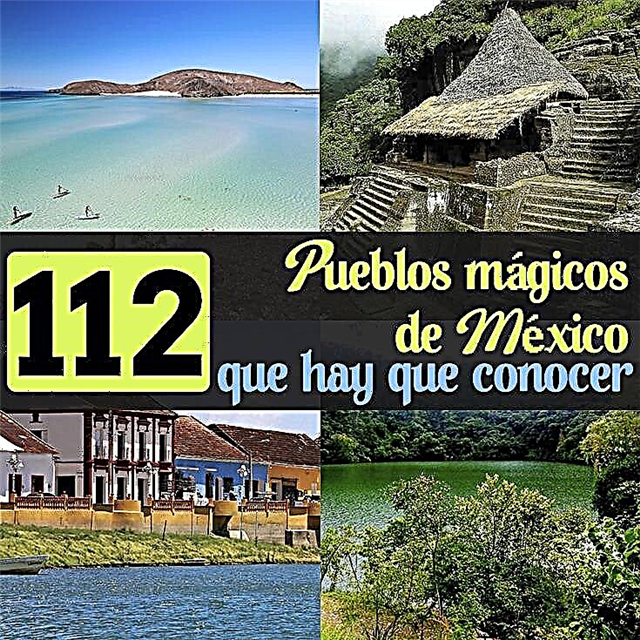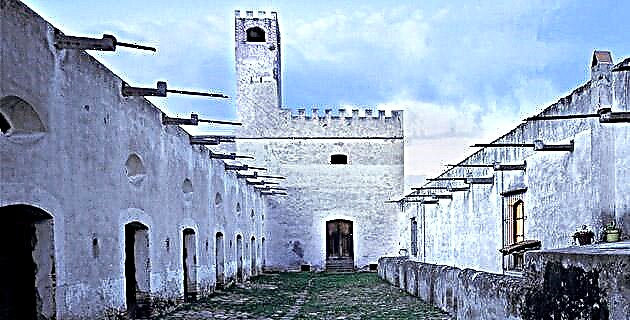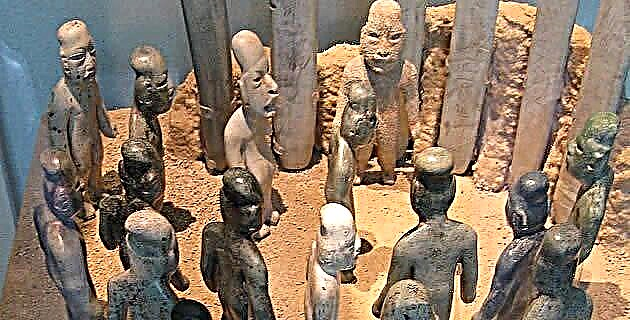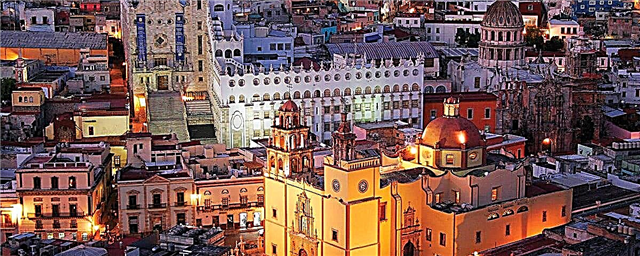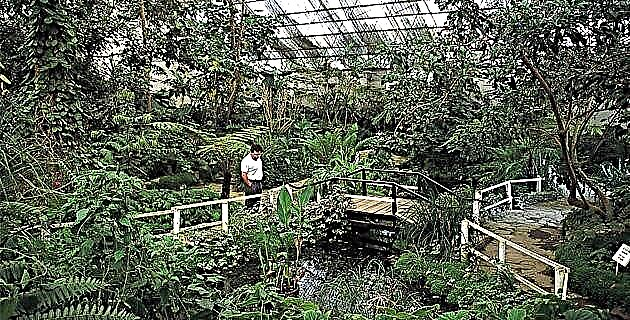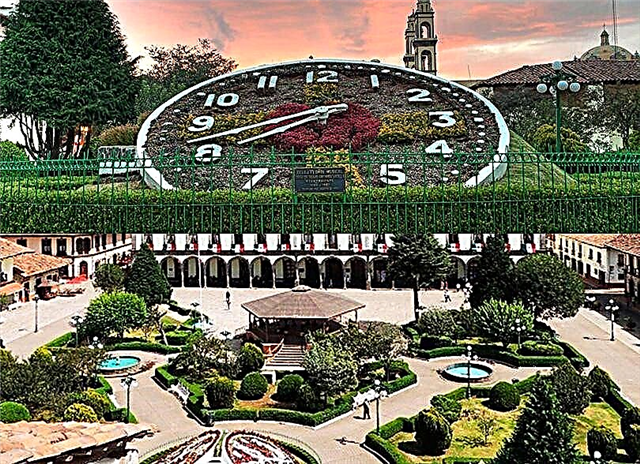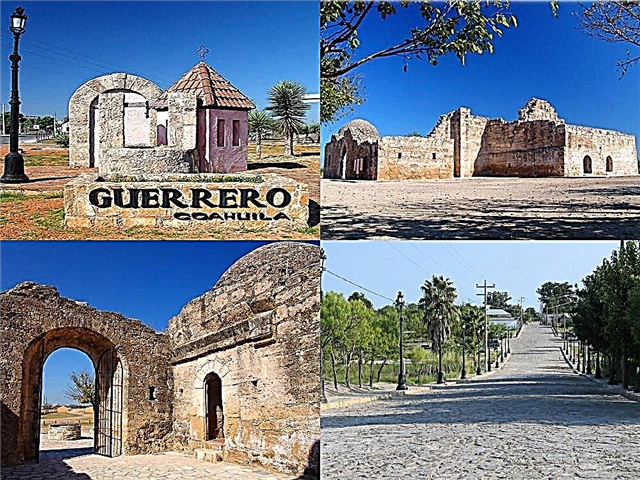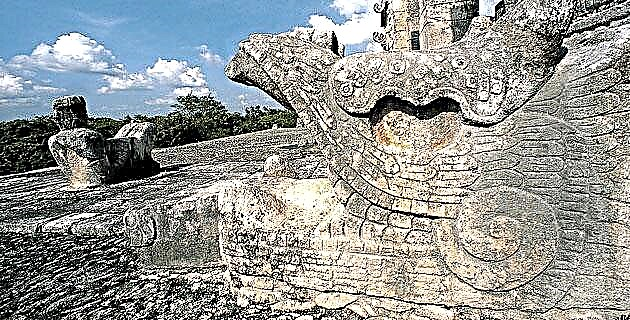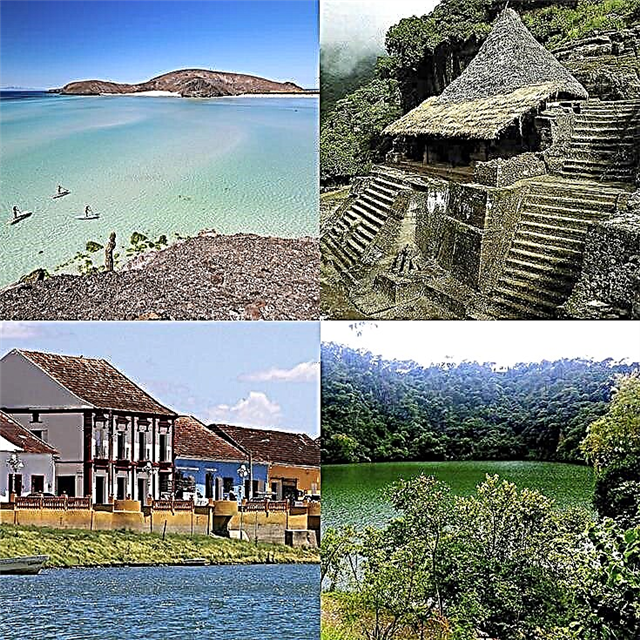The magical towns of Mexico are beautiful.
But what and how many are the magical towns of Mexico? Where are they and how can you visit them?
Here I will tell you which and how many magical towns they are, along with very beautiful photos of each of them.
For now there are 111 or 112 magical towns, depending on whether we consider the fraternal San Juan Teotihuacán and San Martín de las Pirámides as one or as two. Mexico It has many locations worthy of the name of Pueblo Mágico. We invite you to meet those who already proudly display that privileged name.
1. Alamos, Sonora
This Sonoran Magical Town located on the border with the state of Sinaloa, is called La Ciudad de los Portales for the abundance of these elements in its beautiful colonial architecture. Its great attraction is the town itself, with its cobbled streets, temples, mansions and houses, in the midst of a magnificent climate. Between the seventeenth and nineteenth centuries it lived a period of splendor sustained by its silver mines, becoming the first capital of the state.
Its main tourist attractions are the Plaza de Armas, the Iglesia de la Purísima Concepción, the Alameda and the Sonora Costumbrista Museum. One of the most illustrious Alamenses is the famous actress María Félix and you can visit her birth house, where now a museum hostel operates.
If you want to see the complete guide and more photos of Álamos, Sonora click here.
2. Arteaga, Coahuila
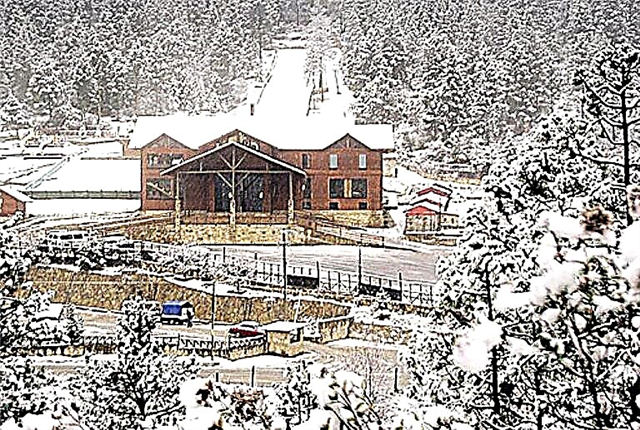
Nestled in the Sierra Madre Oriental, Mexican lovers of the cold can enjoy up to -15 degrees in this territory legitimately called The Switzerland of America. There the Swiss would not miss skiing, since the Monterreal station in the Sierra de Arteaga has a natural snow area for practicing this sport in winter. The rest of the year we resort to artificial tracks. It is also a favorite place for fans of rappelling and mountain biking. The warmth arrives in summer, with the thermometers at 30 degrees.
If you want to see the complete guide and more photos of Arteaga, Coahuila click here.
3. Bacalar, Quintana Roo
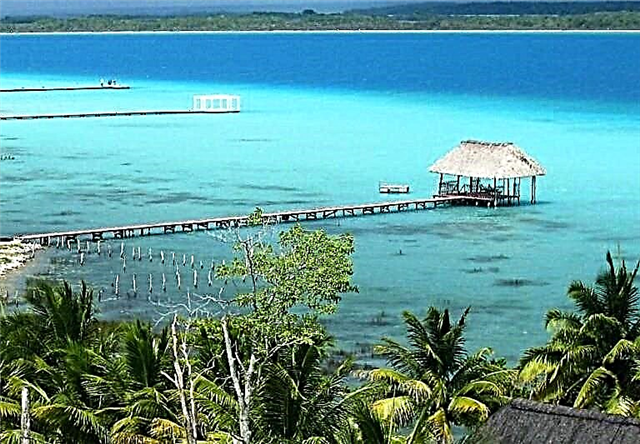
The vital center of the Quintana Roo Magical Town of Bacalar is its lagoon. The so-called Laguna de los Siete Colores for the 7 different bluish tones that show its waters according to the depth, regularly receives a large tourist stream. Visitors go to Bacalar to enjoy a peaceful rest, to enjoy its splendid cenotes, and to practice water sports and entertainment.
The lagoon also offers other charms, such as rapids and rare carbonate formations called stromatolites. A land attraction is the San Felipe Neri Fort, where the Caste War Museum operates.
If you want to know the 12 best things to do in Bacalar click here.
4. Batopilas, Chihuahua
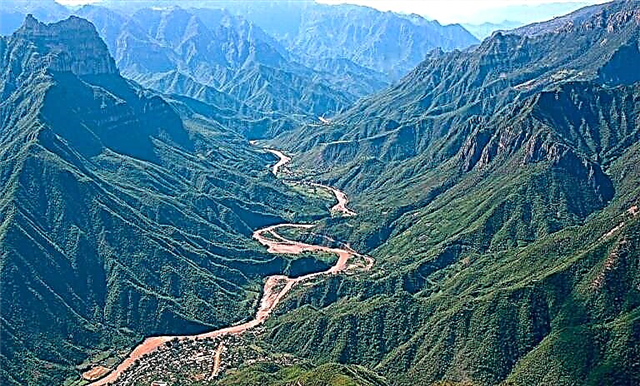
It is a colonial town of just over 1,200 inhabitants, located at the bottom of a ravine in the Sierra Madre Occidental as it passes through Chihuahua. Arriving at the Magic Town, observing the landscape when descending the curvilinear dirt road, is a pleasant journey for tourists, especially those who appreciate ecological and adventure tourism. It lived a period of great boom between the 18th and 19th centuries due to the wealth of its silver mines, during which beautiful large houses were built. In line with the attitude of most of its visitors, the accommodations are very simple, with no city luxuries.
If you want to read a complete guide to Baptopilas, Chihuahua click here.
5. Bernal, Querétaro
One of the great attractions of this Magic Town of Queretaro is the Peña de Bernal, the third largest monolith on the planet, surpassed only by the Rock of Gibraltar at the entrance to the Mediterranean Sea and by the Sugarloaf Mountain in Rio de Janeiro. It was formed from the solidified lava of a volcano that became extinct, then sculpted by the elements. This 300-meter elevation is one of the sanctuaries for climbers in the country.
Bernal is an excellent town to walk around, enjoying its picturesque cobbled streets and its beautiful buildings, among which the Church of San Sebastián, the Chapel of the Souls and the East Castle, a stately 18th century mansion.
If you want to read the complete guide to Peña de Bernal click here.
If you want to know the 30 best things to do in Querétaro click here.
6. Cadereyta de Montes, Querétaro
It is a small Queretaro city that preserves its colonial and peaceful air from when it was founded in the 18th century by the Franciscan religious. The reddish color of its quarry stone stands out in its buildings with baroque and neoclassical lines, among which the temple of San Pedro and San Pablo stands out. Inside the church, the main altarpiece stands out.
Due to its weather conditions, Cadereyta de Montes grows cacti with beautiful blooms and the vine also grows well. Sport fishing in its bodies of water is another booming activity.
If you want to read the complete guide to Cadereyta de Montes click here.
7. Calvillo, Aguascalientes
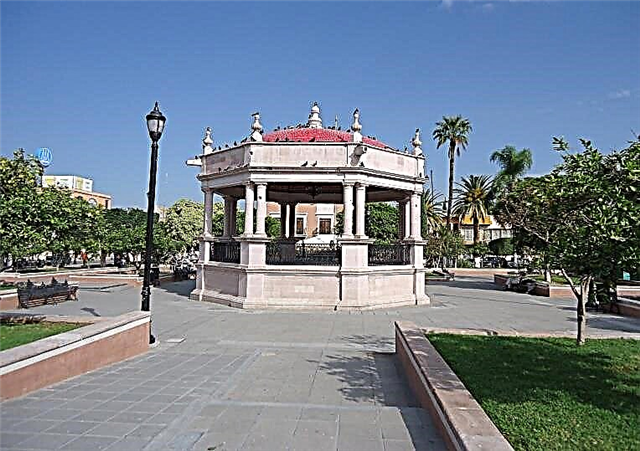
This hydro-warm Magic Town is frequented to admire the Iglesia del Señor del Salitre, which has the second highest dome in Latin America. The town was founded on a property donated in the 18th century by the rich landowner Don José Calvillo. In fact, the haciendas continue to be one of its tourist attractions, such as El Sauz and La Labor. One of the most photographed places in town is its beautiful main square
Calvillo has developed an infrastructure of spas and temazcales, the ancient Mexican steam bath. Other attractions are its beautiful waterfalls, among which Los Alisos and Ciénega stand out.
If you want to know the 12 best tourist places in Aguascalientes click here.
If you want to read the complete guide to Calvillo click here.
8. Capulálpam de Méndez, Oaxaca
It is a Magical Town of strong indigenous roots in which its traditional Medicine stands out. The cures that its connoisseurs offer are based on "clean", massages, temazcal baths and naturist products made with herbs and other vegetables that grow in the Sierra de Juárez. The traditional architecture of the Oaxacan town is very striking, standing out the Temple of San Mateo, the Monument to the Mother, the Monument to the Miner and the typical houses. The interior of the temple is an interesting display, through its altarpieces, of the evolution of Baroque art in Mexico.
If you want to know the 15 best beaches in Oaxaca click here.
If you want to read the complete guide to Capulálpam de Méndez click here.
9. Chiapa de Corzo, Chiapas
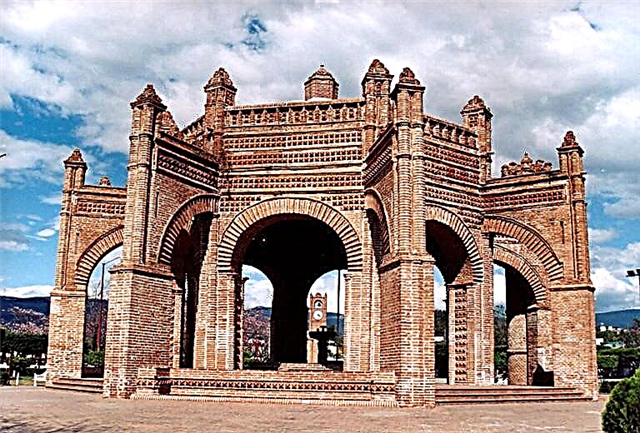
This 16th century Chiapas town was the first colonial settlement of Chiapas and your first capital. The historic center has majestic airs, with the La Pila fountain standing out, also called La Corona, a Mudejar style construction with a diamond shape. Another relevant building is the Temple of Calvary, admirable for its neo-Gothic façade and for an image of the Descent of Christ, carved in wood, which it keeps inside.
The artisans of this Magical Town work very well with wood, especially lacquer, which has a museum. The Sumidero Canyon is a narrow cliff more than a thousand meters deep, in the river Grijalva, which represented Mexico in the selection of the «7 New Natural Wonders»
If you want to read the complete guide to Chiapa de Corzo click here.
10. Chignahuapan, Puebla
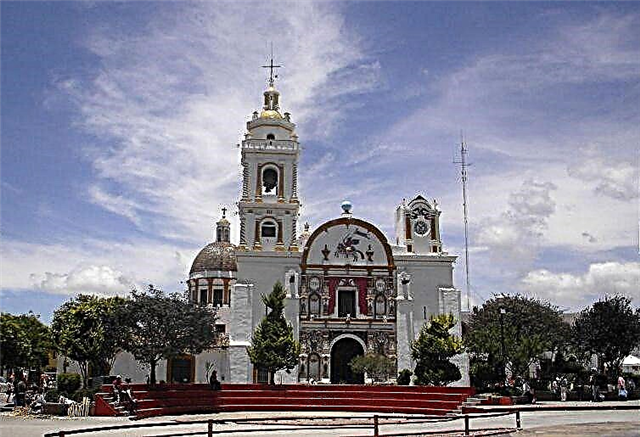
The Christmas spheres that adorn the trees and other Mexican places during the Christmas holidays almost all come from this town in Puebla, which has several dozen workshops that make them with blown glass. In the Plaza de Armas there is a colorful kiosk in Mudejar style and the main facade of the Santiago Apóstol Church is also very attractive.
Other places frequented by visitors are the thermal water spas, the Chignahuapan Lagoon and other bodies of water for the practice of sport fishing, and the Quetzalapa Waterfall, a waterfall of about 200 meters through which adventurers venture. riskier in rappelling.
If you want to know the 30 best things to do and see in Puebla click here.
If you want to read the complete guide to Chignahuapan click here.
11. Coatepec, Veracruz
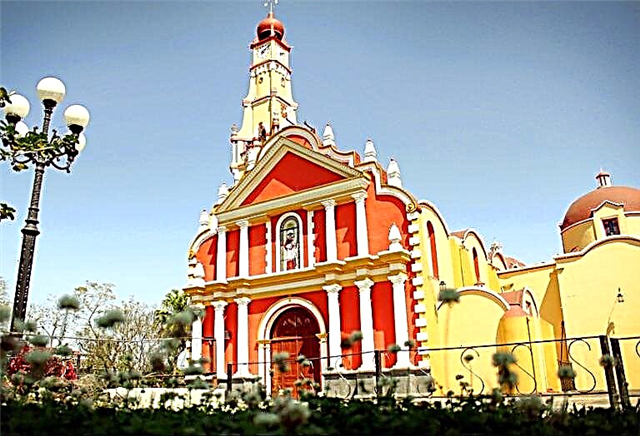
This Magic Town of Veracruz is marked by the evocation of its golden age, between the 19th and early 20th centuries, when it was the «City of Coffee». This picturesque and traditional past is attested by the Coffee Museum, by its farms, such as that of Zimpizahua and that of Orduña, and for the Coffee Fair, which takes place between April and May.
The period of splendor left beautiful buildings, mainly houses with high tile roofs and balconies. The Coatepecan climate is ideal for orchids and in the town there are several samples.
If you want to read the complete guide to Coatepec click here.
If you want to know the 10 things you have to do in Coatepec click here.
If you want to know the 12 best beaches in Veracruz click here.
12. Comala, Colima
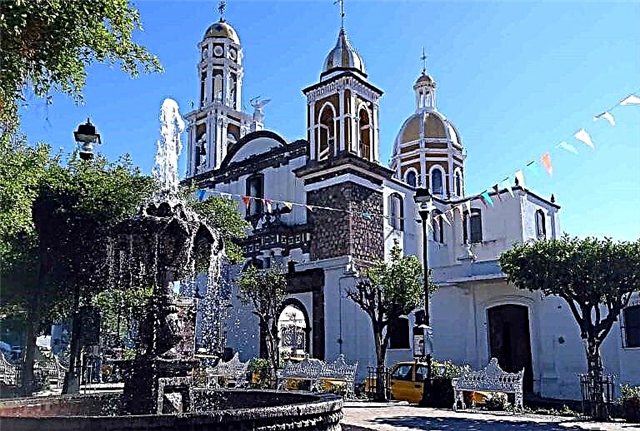
Mexican novelist Juan Rulfo set his famous novel Pedro Paramo in the town of Comala, a story that is considered a masterpiece of Magic Realism. Comala is also a Magical Town in a tourist sense, thanks to literary fiction and its attractions. Now, another of Comala's ghosts is Rulfo himself (1917 - 1986), whose statue sitting on a bench observes visitors to the garden of the town's historic center.
The town has grown since Pedro Páramo rode through its streets the last time and now has more than 20,000 inhabitants, but it still has peaceful streets and squares, ideal for finding a place to do what the Comaltecos like the most: drinking.
If you want to read the complete guide to Comala click here.
13. Comitan, Chiapas
The Chiapas Magical Town of Comitán de Domínguez or Comitán de las Flores offers visitors a pleasant climate and a placid colonial atmosphere. It was founded in 1528, making it one of the towns in Chiapas with the longest viceregal history. Its architecture is proof of the passing of the last millennium. The pre-Columbian period is attested by the nearby archaeological sites of Chincultik and Tenam.
The churches and mansions of its historic center stand out from the colonial era, among which the temple of Santo Domingo should be mentioned; From the years after Independence, the Church of San José stands out; and of the Porfiriato, the Junchavin City Theater. Comitan is a harmonious set of architectural styles.
If you want to know the complete guide of Comitán click here.
14. Cosalá, Sinaloa
The Magical Town of Sinaloa of Cosalá has changed only the essentials since it experienced the prosperity that its rich mines gave it. Its pleasant climate has allowed it to preserve its greenery since it was called "a place of beautiful surroundings" in the indigenous language. The people of Cosalá are very proud of their status as a Magical Town, whose anniversary they celebrate every October 6 with a popular festival, which includes gastronomic displays, music, cultural events and fireworks. Other attractions of Cosalá are its spas and the nearby small town of Higueras de Padilla.
If you want to know the complete guide to Cosalá click here.
15. Creel, Chihuahua
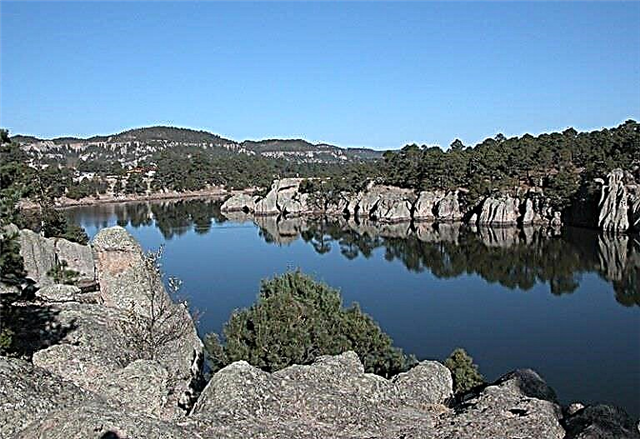
This Magical Town nestled in the upper part of the Sierra Madre Occidental offers the visitor its vast and spectacular landscapes of ravines and valleys. You are on your way to the Copper Canyon, the extensive network of canyons where the Rarámuris Indians live, with dazzling views from land and air. Just 5 kilometers from Creel is Lake Arareco, surrounded by forests and rock formations. Equally close are the spectacular Basaseachi and Cusárare waterfalls.
Apart from its great nature, other attractions of Creel are its Plaza de Armas, the Mission of San Ignacio and the Iglesia de Cristo Rey, a temple with neo-Gothic lines.
If you want to know the complete guide to Creel click here.
16. Cuatro Cienegas, Coahuila
The Magical Town of Cuatro Ciénagas is a haven in the middle of the Coahuila desert, battered by the sun. Its natural attractions are very varied. Its pools are ecosystems that have been classified by science among the most complete to know the emergence of life. Its gypsum dunes are an unusual sight. The Cerro del Muerto, with a profile similar to a corpse, is a peak that many visitors aspire to crown.
The best-known local, the leader Venustiano Carranza, has a museum in his birthplace. Other places of interest are the spas and the La Ilusión Ecotourism Park. In the city it is worth visiting the Chapel of San José. Cuatro Cienegas is a land of good grapes and its lively harvest takes place in July.
If you want to know the complete guide to Cuatro Ciénagas click here.
17. Cuetzalan del Progreso, Puebla
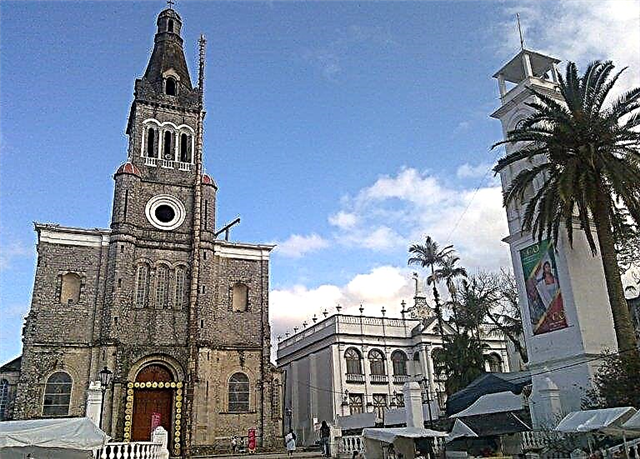
This Poblano Magical Town lulled by the humid ocean breezes from Veracruz is a paradise of greenery. The archaeological site of Yohualichan is one of its attractions, inhabited successively by Totonacs, Toltecs and Chichimecas. The nearby rivers form beautiful waterfalls, among which Las Brisas, Las Hamacas, Golondrinas and Corazón del Bosque stand out.
Thanks to its rich indigenous past, its present is full of pre-Hispanic rites, such as the Dance of Los Quetzales, that of Los Voladores, that of Los Santiagos and that of Los Toreadores. From its architectural landscape, you have to take a look at the Parroquia de San Francisco, the Municipal Palace and the House of Culture.
If you want to see a complete guide to Cuetzalan click here.
If you want to know the 12 things to do and see in Cuetzalan click here.
18. Cuitzeo, Michoacán
Nestled on the shores of the lake of the same name, Cuitzeo del Porvenir underwent an important restoration, which turned it into a cozy Magical Town of Michoacan. Among the buildings of greatest interest are the Augustinian Convent of Santa María Magdalena and the Temple of the Franciscan Hospital. The Tres Cerritos archaeological site is a pre-Columbian legacy of the Tarascan civilization that lived in the territory.
Lake Cuitzeo, the second largest in Mexico, is a refuge for an endemic fauna and is still trying to recover after the ecological disaster that its dissection represented in the 1980s. The Huandacareo thermal zone complements the tourist offer of Cuitzeo del Porvenir.
If you want to know the complete guide of Cuizeo click here.
19. Dolores Hidalgo, Guanajuato
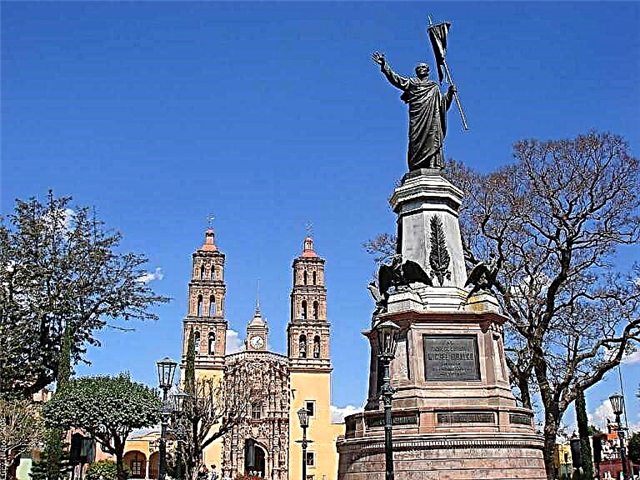
The town of Dolores went down in Mexican history on September 16, 1810 when the priest Miguel Hidalgo y Costilla, accompanied by Ignacio Allende, Juan Aldama, and other notable people from the town, rang the temple bell calling for insurgency. that symbolizes the Mexican Independence. Now the colonial city of Dolores Hidalgo is full of spaces that evoke the feat, starting with the Parish of Nuestra Señora de los Dolores and continuing with the Museum of Independence, the Casa de Hidalgo Museum, the Bicentennial Museum and the Garden of La Independence.
The most famous from Dolor, the singer-songwriter José Alfredo Jiménez, gives his name to a festival that takes place around November 23, the anniversary of his death.
If you want to know the complete guide to Dolores, Hidalgo click here.
20. El Oro, Mexico
This Mexican Magical Town built its identity around mining and has an interesting tourist present that revolves mainly around the culture and infrastructure that was used in the exploitation of its precious metals. The Mining Museum, located at the entrance of the La Providencia mine, offers a complete walk through the history of the town, through documents, photos, plans and the tools and instruments used in the extraction.
To complement the learning about the mining essence of El Oro, you must also visit the North Shot and appreciate the conditions in which the workers went down to the mines, and the impressive Socavón San Juan. Other attractions of the town are the Juárez Theater, the Municipal Palace and the Railway Station.
If you want to know the 12 things to do in El Oro click here.
21. El Rosario, Sinaloa
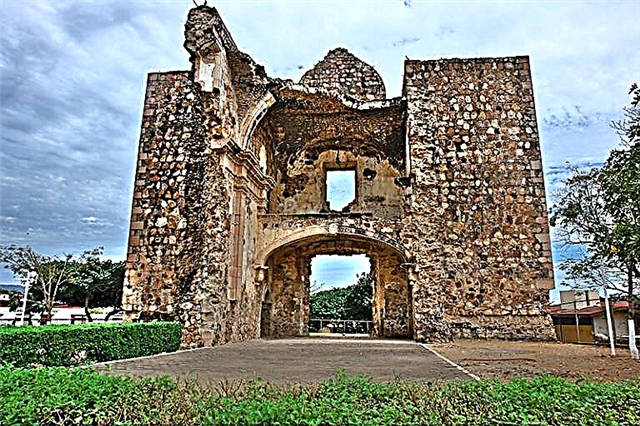
This town in Sinaloa lived its golden age thanks to the precious metal mines, between the 17th and 19th centuries. From its era of splendor there are magnificent buildings that earned it its title of Mexican Magic Town. Among these, the temple of Nuestra Señora de El Rosario stands out, whose main artistic jewel is its gold-plated altarpiece.
The best known Rosario is Lola Beltrán, "The Queen of the Ranchera Song" who has a museum in the town. The Laguna del Iguanero, with its central island that can be reached by a bridge, is an interesting ecosystem, with fish and turtles.
If you want to know the complete guide to El Rosario click here.
22. El Fuerte, Sinaloa
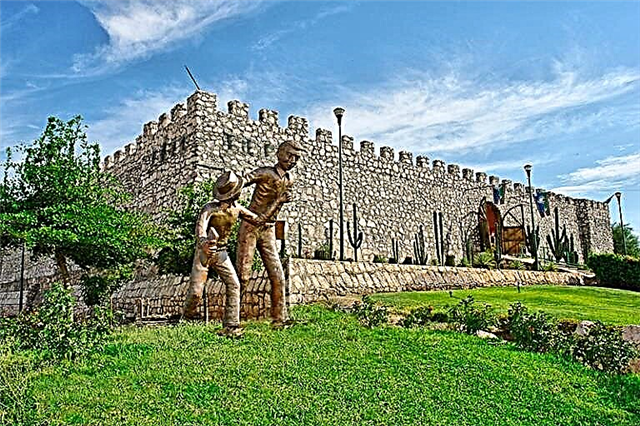
The fierce Mayan Indians did not stop harassing the Spanish residents in the community of San Juan Bautista de Carapoa. So the colonizers built a fortress in the 16th century and the place changed its name. The Magic Town of Sinaloa preserves its beautiful colonial architecture, standing out the Temple of San Juan de Carapoa, the Church of the Sacred Heart of Jesus and the Museum of the Fort.
In the Río Fuerte basin there are sites with interesting manifestations of rock art. The natives of El Fuerte are consummate craftsmen in the ixtle fiber work, with which they make rugs, hammocks and other objects.
If you want to know the complete guide to El Fuerte click here.
23. Huamantla, Tlaxcala
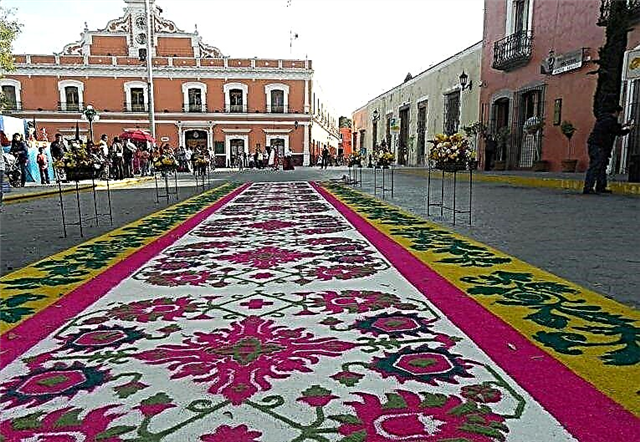
It offers a wide variety of attractions, such as its pulque haciendas, its French-style architecture, its museums, including the Puppet Museum, and its fairs. The Huamantla Codex, a pre-Columbian painting of the Otomí civilization, gives an account of some facets of the life of the ancient inhabitants of this region, including agriculture. Hence an ancient pulquera tradition, currently reflected in its farms, which are a tourist attraction.
In Huamantla is the original National Puppet Museum, which includes pre-Hispanic pieces. The two great festivals of the town are La Noche que Nadie Duerme, between August 14 and 15, and La Huamantlada.
If you want to know the complete guide to Huamantla click here.
24. Huasca de Ocampo, Hidalgo
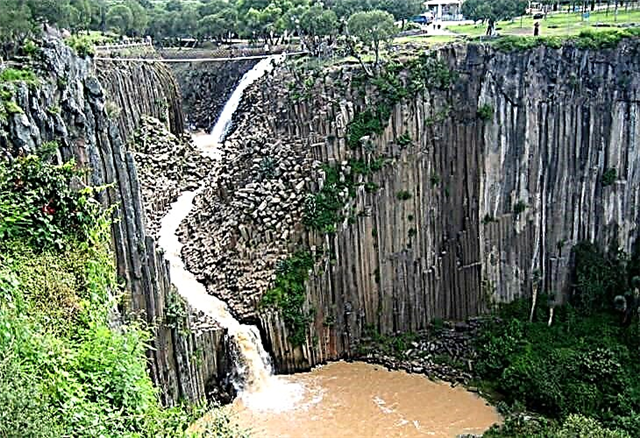
The Hidalgo Magical Town of Huasca de Ocampo stands out for its basaltic prisms, natural spaces and beautiful crafts. The prisms are curious rock formations that serve as the bed of a stream that descends until it falls into a pool. In the architecture of the town the Church of Juan el Bautista and the curious Museum of the Goblins stand out, which works in a beautiful wooden house and exhibits a collection of horsehair and other pieces of interest.
The oyamel forests and other species and the old beneficiation farms are the ideal natural complement. The ceramic in colored clay is very striking.
If you want to know the 15 best things to do in Huasca de Ocampo click here.
25. Huichapan, Hidalgo
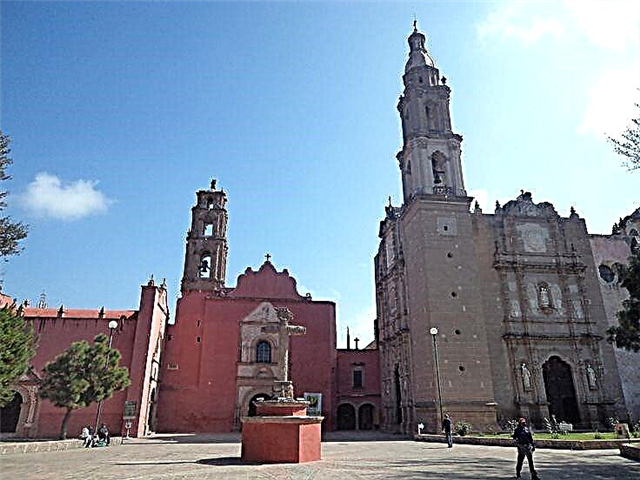
It is another Magical Town of Hidalgo, full of history and warm waters. Of Toltec heritage, it was this pre-Columbian civilization that named it "a place of abundance of water" and the pleasant temperature is the ideal complement to take a good thermal bath. The center of the small town is of pleasant cobbled streets and traditional houses with large windows and wrought iron lattices.
Other places of interest are the Church of San Mateo, the Temple of Calvary, the Chapel of the Virgin of Guadalupe and the Museum of Archeology and History. The museum takes a tour of the pre-Hispanic, colonial and modern culture of Huichapan.
If you want to know the complete guide to Huichapan click here.
26. Izamal, Yucatan
It is called the "City of the Three Cultures" for its important pre-Hispanic, viceregal and modern heritage. Its pyramids stand out from pre-Columbian times, such as the one built in honor of Kinich Kakmó, a Mayan deity related to the Sun. From the colonial period, the Franciscan convent of San Antonio de Padua stands out, with its large and beautiful atrium, and the large houses in the center. historical. One particularity of Izamal is that a large number of buildings, including temples, are painted yellow gold, which is why the Yucatecan town is also called La Ciudad Amarilla.
If you want to know the complete guide to Izamal click here.
27. Jala, Nayarit
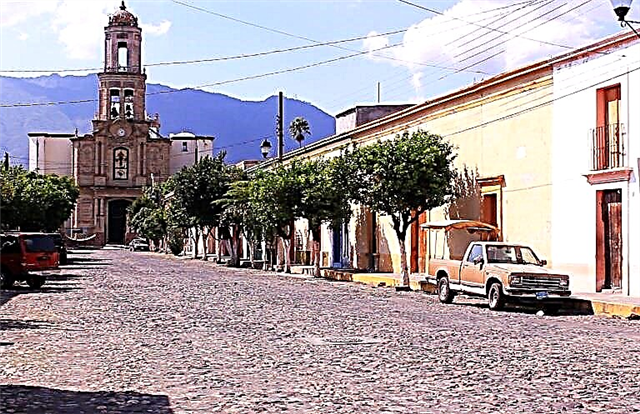
This peaceful Nayarit city invites you to walk through its streets with buildings of traditional architecture, especially its temples, such as the Lateran Basilica of Our Lady of the Assumption, a temple in which Romanesque and Gothic lines are harmonized; the Chapel of San Francisco and the Temple of the Nativity.
Another attraction near Jala is the Ceboruco, a 2,280-meter volcano that occasionally emits fumaroles. In its skirts the hunting fauna abounds.
If you want to know the complete guide to Jala click here.
28. Jalpa, Guanajuato
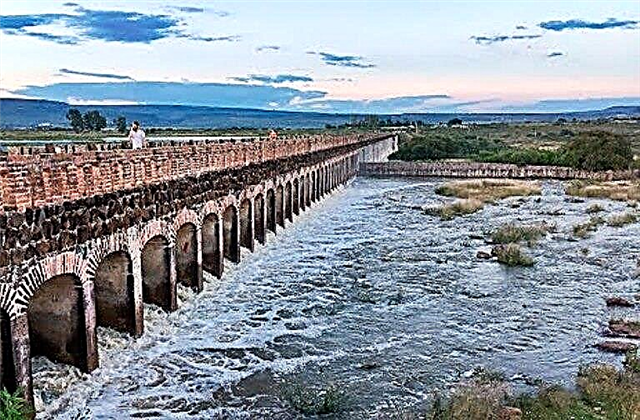
Jalpa de Cánovas is a small Guanajuato community of just over 700 inhabitants, elevated in 2012 to the category of Magical Town, ´mainly because of its typical architecture, with cobbled streets and houses and buildings of traditional style. Among these we must see the Temple of the Lord of Mercy, made of red bricks and neo-Gothic ornamentation; the Molino Viejo Aqueduct, the Sanctuary of Our Lady of Guadalupe and the Temple of the Holy Mother of Light. Other places of tourist interest are its dams, farms and the Cañada de Los Negros Park.
If you want to know the complete guide of Jalpa click here.
29. Jalpan de Serra, Querétaro
The town that bears the name of the Franciscan Junípero Serra has a splendid 18th century mission dedicated to the Apostle Santiago, whose construction was directed by the famous Spanish friar who was beatified by John Paul II and canonized by Francisco. Another interesting place is the Historical Museum of the Sierra Gorda, located in the fort built during the viceregal era. A very popular celebration is the Fiesta del Santo Niño de Jalpan or the Santo Niño de Mezclita, named for the place where it was found.
If you want to know the complete guide of Jalpan de Serra click here.
30. Jerez de García Salinas, Zacatecas
The first Zacatecan town to reach the name of Pueblo Mágico, is a quiet place, with attractive neoclassical buildings, surrounded by greenery, with the Sierra de Cardos in the background. It celebrates one of the most traditional festivals in Mexico, the Spring Fair, which dates back to 1824 and detonates its launching rocket on Glory Saturday. The Jerez people scattered throughout the rest of Mexico and other nearby countries return to the land for the party, which offers the Burning of Judas, charro horseback riding and other manifestations of joy.
Among the buildings of the town it is worth visiting the Sanctuary of Our Lady of Solitude, the Hinojosa Theater, the Tower Building and the Ramón López Velarde House Museum, a poet born in the town.
If you want to know the complete guide to Jerez de García Salinas click here.
31. Jiquilpan, Michoacán
This Magical Town is also called the "City of Jacarandas" for the abundance of this beautiful flowering tree, under the protection of a temperate climate at almost 1,600 meters above sea level. The beautiful town has many places of interest, such as the Public Library, with 10 murals by the famous painter José Clemente Orozco, which make a brief artistic journey through the history of Mexico. At the Francisco Madero School you can admire a mural by the painter from Puebla, Roberto Cueva del Río, alluding to the Mexican Revolution.
The most renowned jiquilpense, President Lázaro Cárdenas, has a monument and a museum about his life. Other interesting places in Jiquilpan de Juárez are the Ex-Franciscan Convent, the Church of the Sacred Heart, the Stone House and the El Porvenir Feliciano Béjar House Museum, a notable artist from Jiquilpa.
If you want to know the complete guide click here.
32. Loreto, Baja California Sur
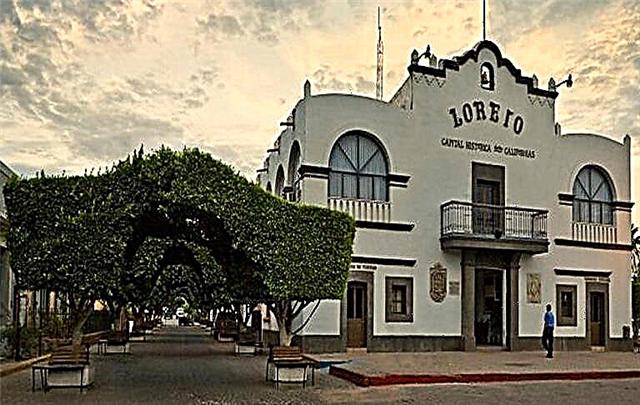
The Southern California Magic Town of Loreto, capital of Las Californias between the 17th and 18th centuries, awaits the visitor with its rich history and beautiful beaches. The Mission of Nuestra Señora de Loreto Concho is the emblematic monument of the small city and the most important Jesuit complex in the Baja California Peninsula. Located in front of the Sea of Cortez, Loreto has paradisiacal beaches; places for fishing and for observing marine life, such as the blue whale on Isla El Carmen; and missions and other attractions in nearby places, such as San Javier, San Bruno and San Juan Bautista Londó.
If you want to read the complete guide to Loreto click here.
If you want to know the 12 best things to do in Loreto click here.
33. Lagos de Moreno, Jalisco
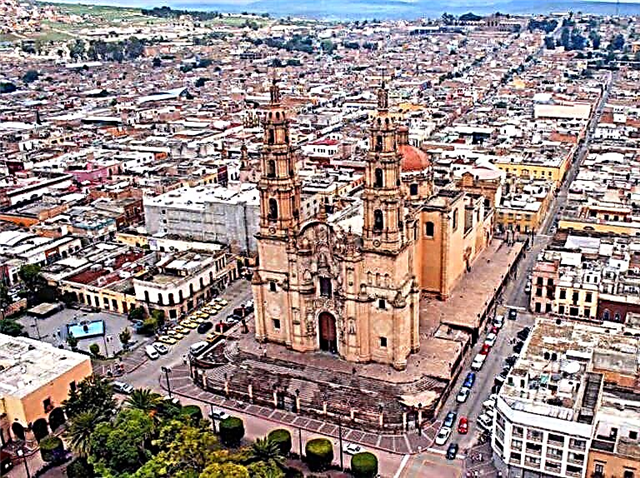
The Magic Town that honors its most illustrious son, the Insurgent Pedro Moreno, fills tourists with admiration for its beautiful architectural heritage, in which the parish church of Nuestra Señora de La Asunción stands out; the temples of Comanja de Corona, La Merced and El Calvario; and the Museum of Sacred Art.
Among the civil buildings, the School of Arts and Crafts, the beautiful neoclassical headquarters of the Public Library, the Conde de Rul Residence, the Lagos Bridge and the Casa de la Rinconada de la Merced stand out, a large house that housed Miguel Hidalgo and Rib.
If you want to know the complete guide to Lagos de Morena click here.
34. Magdalena de Kino, Sonora
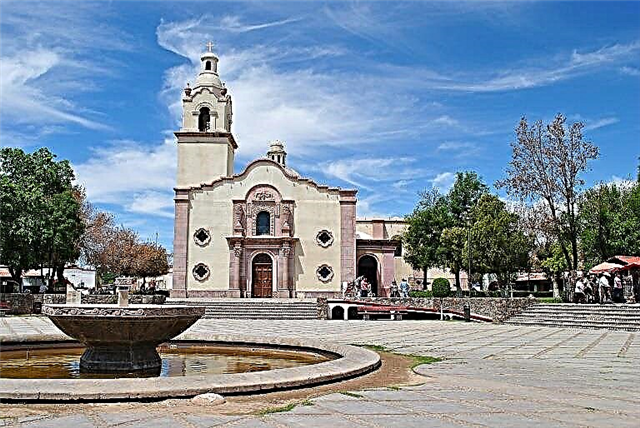
The Mission of Santa María Magdalena de Buquibaba was founded in 1687 by the Jesuit father Eusebio Francisco Kino and since then it has accumulated religious and civil buildings that underpinned its declaration of Magical Town. In its architecture, the Temple of Santa María Magdalena, the church of San Felipe de Jesús, the Plaza Juárez, the Plaza Monumental, the Municipal Palace and the Monument to Luis Donaldo Colosio, a presidential candidate assassinated in 1994, a native of the town stand out.
A spectacle worthy of admiration in Magdalena de Kino is the Danza del Venado, a colorful rite of the Sonoran Indians.
If you want to know the complete guide to Magdalena de Kino click here.
35. Malinalco, Mexico
It is a Magical Town in the state of Mexico, located near Cuernavaca and Toluca. Its main tourist attraction is the Cerro de los Ídolos, an archaeological zone with imposing monoliths, built without metal tools and, apparently, without the use of wheels. The main Cuauhcalli temple has the peculiarity that it was carved entirely out of the rock in one piece, being a rare example of monolithic religious building worldwide.
Other places of interest in the town are the University Museum and the "Luis Mario Schneider" University Cultural Center, and the Malinalxochitl House of Culture.
If you want to read a complete guide to Malinalco click here.
If you want to know what are the 12 things to do in Malinalco, do click here.
36. Mapimi, Durango
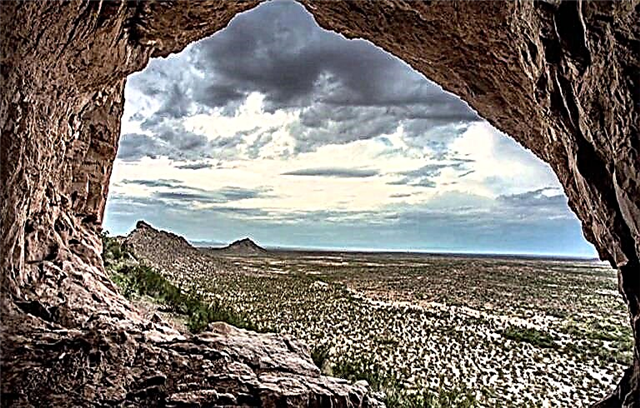
El Bolsón de Mapimi, located between the states of Durango, Chihuahua and Coahuila, is the largest desert area in Mexico and takes its name from the Durango Magic Town of Mapimi. It is a town with viceregal and independence history, with legends such as The Thieves of Ojuela Y The Four of a Horse, and with an attractive architecture in its historic area. In this, the Church of Santiago Apóstol and the large house where Benito Juárez stayed when he was persecuted by the French occupants stand out.
A nearby place that you cannot miss is the Ghost Town of Ojuela, a town in ruins after living its heyday with the exploitation of gold and silver. The mines can be visited in the company of expert guides.
If you want to read the complete guide of what to do in Mapimi click here.
37. Mazamitla, Jalisco
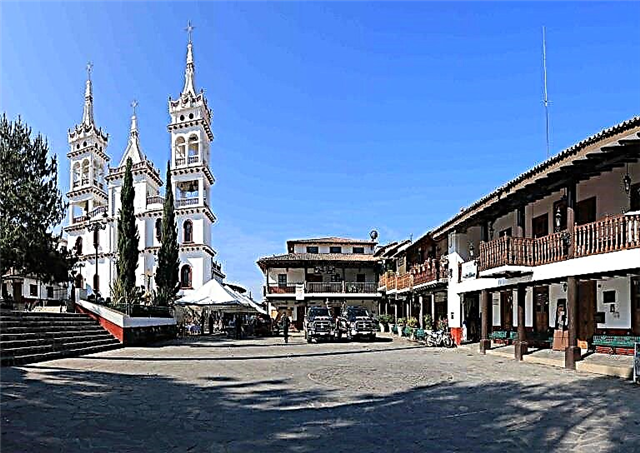
In the middle of the Sierra del Tigre, the Jalisco Magical Town of Mazamitla offers tourists cozy streets, particular buildings and beautiful natural spaces. The Church of San Cristóbal is a rare example of a Christian temple difficult to locate in an architectural style, but with Chinese influences. Among its natural attractions are the Arroyo Encantado Park, El Salto Waterfall and countless wooded areas.
The wild poppy is the official flower of the town and in the month of October, every weekend, the Flower Festival takes place, a beautiful sample of the local flora.
If you want to know the complete guide to Mazamitla click here.
If you want to know the 12 best things to do in Mazamitla click here.
38. Metepec, Mexico
This is perhaps the economically richest Magic Town in Mexico, protected mainly by the transnational industry and its growing tourist activity. It is a town with a great artisan tradition, especially that of ceramics and glass. Do not forget to visit the Casa del Artesano and the Artisan Corridors, where you will surely find, at a very convenient price, a beautiful piece for yourself or as a gift.
Other attractions are the former Convent and the Church of San Juan Bautista, a temple with a main facade in Baroque style; the Church of Calvario, with neoclassical airs and the Plaza Juárez. The Pan American Ecology Center stands out for its modern lines.
If you want to know the complete guide of what to do in Metepec click here.
39. Wed, Tamaulipas
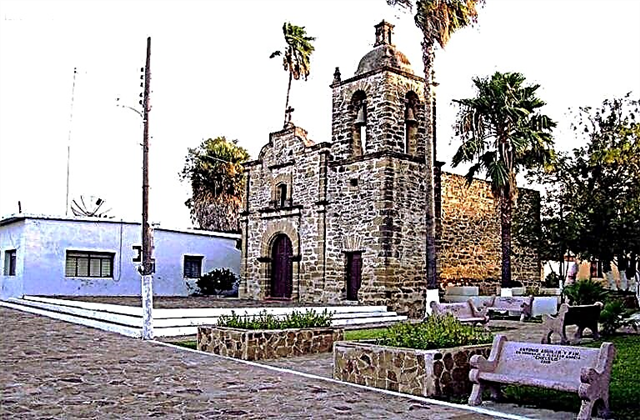
Mier is a Tamaulipas town on the border with the United States, which sustains its category of Magic Town in its bodies of water in the middle of a desert area and in its interesting architecture. Bathed by the Álamo and Bravo Rivers, the dammed waters offer visitors magnificent spaces for sport fishing. It also has spas and places to go hiking.
The Magical Town of Mier presents a rich architecture, with about a hundred historical buildings. Among these we must see the frugal Church of the Immaculate Conception, the Chapel of San Juan Bautista, the House of Tejano and the House of Columns.
40. Mineral de Angangueo, Michoacán
It is a Michoacan Magic Town nestled in the greenery of the Sierra Madre Oriental mountains. The Angangueans are a town marked by the splendor and harshness of its mining past, which now sustains its tourist attraction in its beautiful landscapes and in the observation of nature. Mineral de Angangueo is one of the few natural spaces in Mexico that is a sanctuary for the Monarch Butterfly and the town is frequented by ecological tourists who go to see it especially from February to March.
Entre los edificios de interés de la localidad están la Iglesia de la Inmaculada Concepción, la Parroquia de San Simón Celador y la Casa Parker.
Si quieres conocer la guía completa de Mineral de Agangueo click here.
41. Mineral de Pozos, Guanajuato
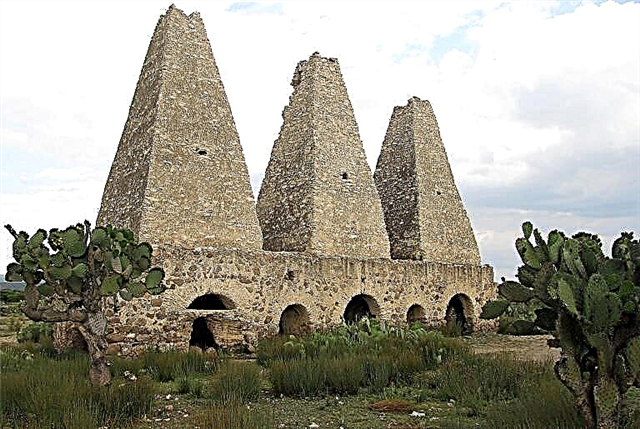
Mineral de Pozos se negó a morir y uno de los premios a su constancia ha sido su elevación a la categoría de Pueblo Mágico. Hasta por dos veces, los pobladores del pueblo minero dejaron sus calles desoladas y sus casas abandonadas, hasta el último retorno, que al parecer ha sido definitivo. Del pasado legendario quedan los restos de las minas y de las haciendas de beneficio, y las recuperadas edificaciones que forman parte de su paisaje arquitectónico, como la Parroquia de San Pedro y la Capilla de San Antonio de Padua. Por el mes de mayo, en la localidad tiene lugar un festival mariachi de lo más animado.
Si quieres conocer la guía completa de Mineral de Pozos click here.
42. Mineral del Chico, Hidalgo
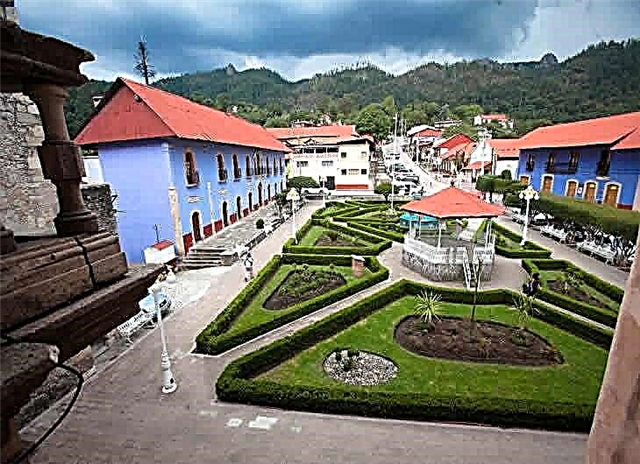
Como otros pueblos mineros mexicanos, este Pueblo Mágico nació en el siglo XVI, cuando los conquistadores españoles encontraron metales preciosos en sus alrededores. Rodeado de bosques, El Chico es ahora una sosegada localidad de poco más de 500 habitantes, que brinda a los visitantes sus espacios naturales y su pasado minero. Cerca de la población hay una capilla con una pequeña y bonita cascada.
En el pueblo, la edificación más llamativa es la Iglesia de la Purísima Concepción, de estilo neoclásico y fachada de piedra labrada. Otros lugares de interés son la Mina San Antonio, la Peña del Cuervo y el Parque Ecológico Recreativo Carboneras.
Si quieres conocer la guía completa de Mineral del Chico click here.
43. Nochistlán, Zacatecas
En medio de cerros poblados de nopales está este Pueblo Mágico zacateco, que sobresale por su bella arquitectura. Ejemplos de esta son la iglesia de San Francisco de Asís, un templo del siglo XVII; El Parián, un edificio del siglo XIX con columnata arqueada labrada; el templo de San José y el templo de San Sebastián, cuyos parroquianos celebran en enero las festividades llamadas «las empinoladas» Otras estructuras interesantes son el antiguo acueducto de Los Arcos; el Monumento a Francisco Tenamaztle, héroe indígena de la localidad; y la Casa de los Ruiz, el lugar en el que los primeros zacatecos gritaron ¡Independencia! en 1810.
Si quieres conocer la guía completa de Nochistlán click here.
44. Pahuatlán, Puebla
Es uno de los mejores lugares de México para sumergirse en el pasado indígena del país. Todo en Pahuatlán exhala aromas precolombinos, desde las casas sencillas hasta las comidas, pasando por los bailes folclóricos y la curación indígena, en la que sobresalen los baños medicinales con hierbas supuestamente milagrosas de la localidad. Incluso, si deseas vivir una experiencia a la ancestral usanza, puedes consultar a un auténtico brujo.
Por el mes de noviembre, Pahuatlán es sede del Encuentro Nacional de Voladores, la espectacular danza prehispánica mexicana.
Si quieres conocer la guía completa de Pahuatlán click here.
45. Palizada, Campeche
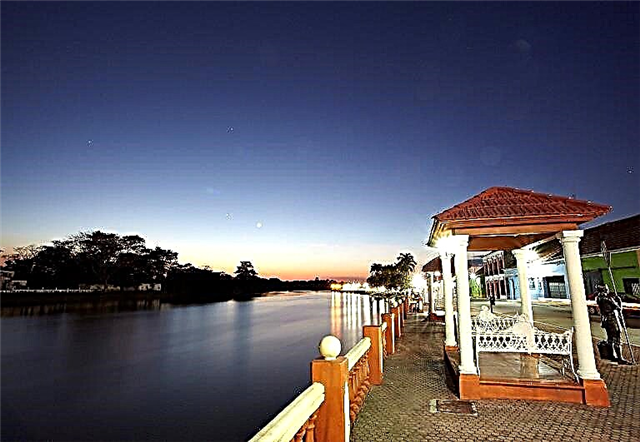
Los campechanos de este Pueblo Mágico se enorgullecen de su paisaje arquitectónico, particularmente, de las casas y edificios techados con teja francesa. En el centro colonial pueden admirarse varias edificaciones con la inusual cubierta y atractivas puertas y ventanales. Otras edificaciones llamativas son el Palacio Municipal, la Casa del Río, erigida en estilo francés, con pinceladas renacentistas y neoclásicas; la Iglesia de San Joaquín y la Capilla del Señor de Tila. Muy cerca de la localidad está El Cuyo, un sitio arqueológico maya. En torno al Río Palizada hay varios espacios naturales por los que pasear y realizar actividades de entretenimiento al aire libre, como el Parque Juáréz, el Parque de la Libertad y El Playón.
Si quieres conocer la guía completa de Palizada click here.
46. Papantla, Veracruz
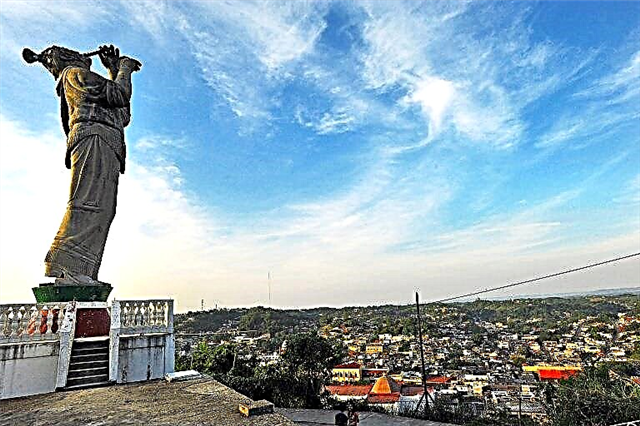
Papantla quiere decir «ciudad de papanes» en la lengua náhuatl. El papán era un ave y quizá de allí viene la tradición voladora de los papantecos, que los elevó a la categoría de Pueblo Mágico mexicano. Este pueblo veracruzano es el lugar de nacimiento del Rito o Danza de los Voladores, uno de los espectáculos folclóricos más hermosos del país. Los danzantes hacen un asombroso descenso desde un palo de 17 metros de altura, llamado el «palo volador» ceremonia que constituye una especie de ofrenda a la lluvia. Otras danzas autóctonas de Papantla de Olarte son Los Negritos, con reminiscencias africanas y españolas, y Los Guaguas, en la que se adora al Sol.
Si quieres conocer la guía de Papantla click here.
47. Parras de la Fuente, Coahuila
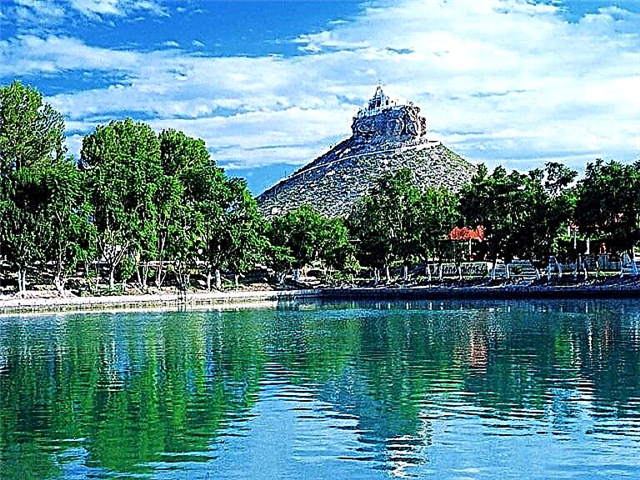
La vid y los nogales se dan muy bien en este mágico remanso, en medio de la aridez del desierto coahuilense. Los amantes de la historia y de la enología que no hayan visitado este lugar están en deuda con él, ya que allí se llenó en 1597 la primera botella de vino surgido de vides americanas y en 1873 fue el lugar de nacimiento del iniciador de la revolución Mexicana, Francisco Madero. Sus bodegas y haciendas constituyen ahora atractivos turísticos, así como el Santuario de Nuestra Señora de Guadalupe y el Museo de la Revolución y del Vino, que funciona en la Casa Madero. Otra atracción peculiar de Parras de la Fuente es la Cueva de los Murciélagos, un ecosistema en el que habitan unos 40.000 ejemplares del único mamífero volador.
Si quieres conocer la guía completa de Parras de la Fuente click here.
48. Pátzcuaro, Michoacán
Pátzcuaro significa «puerta del cielo» y con seguridad que en este Pueblo Mágico michoacano te sentirás en el paraíso. Es una localidad de herencia purépecha y uno de sus principales atractivos turísticos son los sitios arqueológicos situados cerca del lago. El Lago de Pátzcuaro es un bonito cuerpo de agua con 7 islas. La isla mayor es Janitzio y en ella los pescadores hacen una hermosa representación, evocando las antiguas artes de pesca. En el pueblo de calles empedradas sobresalen sus iglesias, como la Basílica de la Virgen de la Salud y el Templo y Hospital de San Juan de Dios; sus palacios y casas, como el Palacio de Huitziméngari y la Casa de los Once Patios; y sus plazas, como la de Vasco de Quiroga y la de San Francisco.
Si quieres conocer la guía completa de Pátzcuaro click here.
49. Pinos, Zacatecas
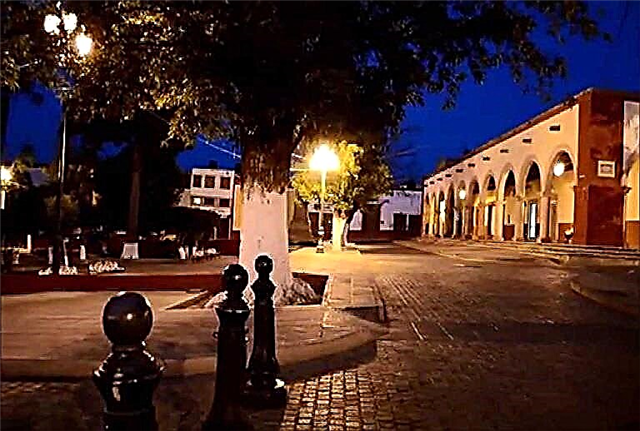
El pasado esplendor minero de este Pueblo Mágico zacateco posibilitó el legado de un conjunto de bellas edificaciones que constituye hoy su principal atractivo para el visitante. A cambio, de las arboledas que dan nombre del pueblo quedó menos, ya que la mayoría fue abatida para proporcionar combustible a las fundiciones. Entre los principales monumentos arquitectónicos de la localidad están sus templos, como el de San Matías, el de Tlaxcalita, el de la Santa Veracruz y el de San Francisco. Durante la segunda quincena de febrero se celebra la Feria Regional de San Matías, una de las más completas y frecuentadas del estado de Zacatecas.
Si quieres leer la guía completa de Pinos Zacatecas click here.
50. Real de Asientos, Aguascalientes
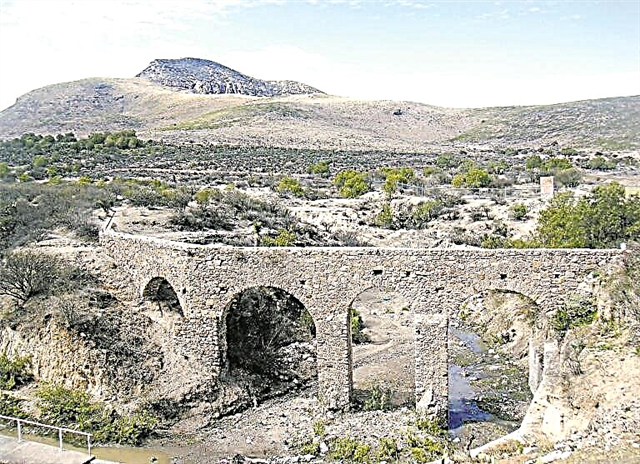
Este Pueblo Mágico hidrocálido es una de las localidades más antiguas del estado, ya que fue fundado en 1548. Vivió de la actividad minera, pero sus principales atractivos son sus lugares coloniales. Entre estos sobresalen el templo de Nuestra Señora de Belén, levantado a principios del siglo XVIII; el Monasterio Franciscano, la Casa Larrañaga, la Casa del Minero y el Acueducto Escondido de Asientos. Un lugar particularmente interesante es el Museo Vivo de Cactáceas, que cuenta con una muestra de unas 60 especies de cactus, algunas con una espectacular floración.
Si quieres conocer la guía completa de Real de Asientos click here.
51. Real de Catorce, San Luis Potosi
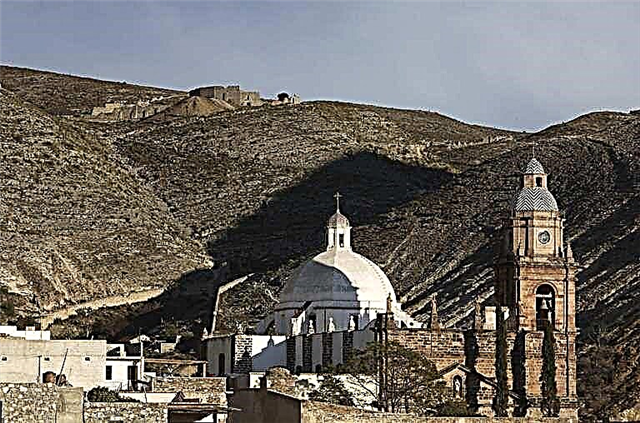
Pueblo Mágico de pasado legendario, en el que se mezclan las tradiciones del pueblo huichol y las minas de plata, que fueron en su momento las segundas más productivas del mundo. El propio nombre del pueblo es una leyenda, ya que habría surgido del extermino de una banda de 14 malhechores. Más real y valiosa es la moneda de 8 reales que se acuño en el pueblo en 1811, ávidamente buscada por coleccionistas ricos dispuestos a pagar 50.000 dólares por un ejemplar legítimo. De la abundante riqueza quedó poco, pero lo que se conservó es sobrio y majestuoso, como sus viejas calles y el templo de la Purísima Concepción.
Si quieres conocer la guía completa de Real De Catorce click here.
52. Real de Monte, Hidalgo
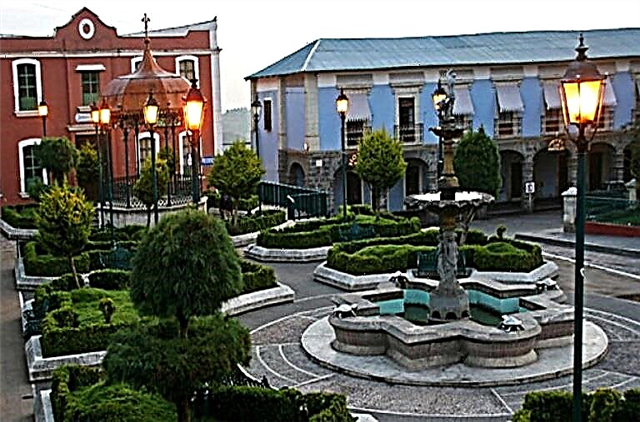
Pueblo Mágico hidalguense de vieja tradición minera, que muestra al visitante las interesantes facetas y las duras condiciones en que se ejercía el oficio de minero en el pasado. La Iglesia de Nuestra Señora de La Asunción, la Capilla del Señor de Zelontla y la Capilla de Veracruz son sus principales edificios religiosos.
El acervo minero está representado principalmente por el Museo de Sitio Mina de Acosta, el Museo de Sitio Mina La Dificultad y el Monumento al Minero Anónimo. En el siglo XVIII, los mineros de Real del Monte y Pachuca protagonizaron la primera huelga laboral de América, episodio histórico que es recordado con un monumento y un museo.
Una interesante tradición culinaria de la localidad son sus pastes, una especie de empanada heredada de los ingleses que explotaban las minas.
Si quieres conocer la guía completa de Real de Monte click here.
53. Salvatierra, Guanajuato
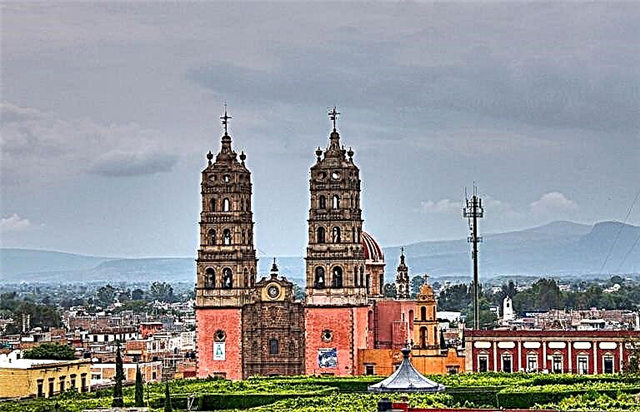
Este Pueblo Mágico es un enclave del pasado en suelo guanajuatense. La vida virreinal de la mayoría de los pueblos mexicanos transcurría entre la casa, la iglesia y la hacienda, y Salvatierra es un cofre con joyas de todos estos tipos. Entre las edificaciones religiosas destacan el Templo y Convento de las Capuchinas, el Templo de San Francisco de Asís y la Iglesia de Nuestra Señora de la Luz. La producción agrícola ya no se hace con los pintorescos métodos coloniales, pero de Salvatierra siguen brotando frescas y deliciosas hortalizas, verduras y frutas.
Si quieres leer la guía completa de Salvatierra click here.
54. San Cristóbal de las Casas, Chiapas
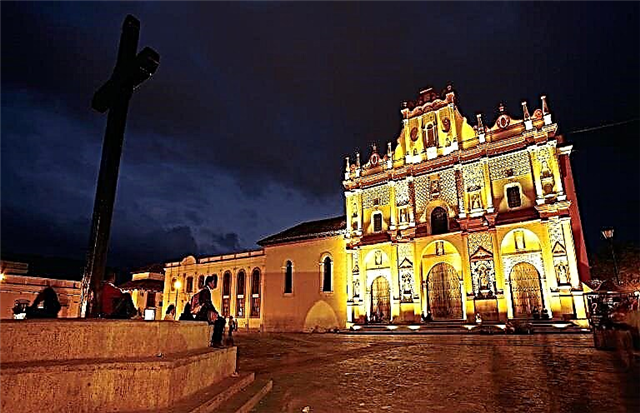
El Pueblo Mágico chiapaneco de San Cristóbal de las Casas tiene uno de los cascos coloniales más hermosos de todo México. Sobresalen en el paisaje arquitectónico la Catedral, el Ex convento de Santo Domingo de Guzmán y su templo, la Casa Utrilla, el Templo de la Merced, el Palacio Municipal y la Casa del Congreso. La localidad cuenta también con varios interesantes museos, entre los que destacan el dedicado a los trajes regionales y los especializados en el ámbar y el jade. La cultura maya fue muy inquieta en temas científicos y la ciudad cuenta con un Museo de la Medicina Maya. Otras atracciones son sus espacios naturales, tales como las Grutas de Mamut, Grutas de Rancho Nuevo, Las Canastas y El Arcotete.
Si quieres conocer la guía completa de San Cristóbal de las Casas click here.
55. San Pedro Cholula, Puebla
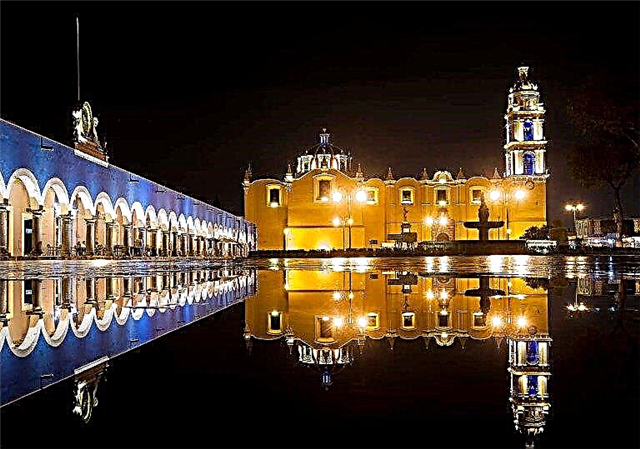
La antigüedad precolombina y el pasado virreinal de este hermoso Pueblo Mágico poblano quedan magistralmente expresados a través de su Gran Pirámide, sus iglesias y sus casonas coloniales, particularmente la que alberga el Museo Casa del Caballero Águila. La Gran Pirámide cuenta con el basamento piramidal más grande del mundo, con 400 metros de lado. En altura, sus 65 metros son solo superados por los 70 del Templo IV de Tikal.
Los edificios más llamativos son la Iglesia de Nuestra Señora de los Remedios, el Convento de San Gabriel, la Capilla Real. El Museo de La Barrica muestra el arte de la elaboración de la sidra.
Si quieres conocer la guía completa de San Pedro Cholula click here.
56. San Sebastián del Oeste, Jalisco
A solo 60 kilómetros del esplendor marino de Puerto Vallarta, está este Pueblo Mágico, como detenido por el tiempo en medio del bosque. Los lugareños siguen repitiendo las centenarias historias de su rico y populoso auge minero, mientras se ganan la vida gracias a su clima propicio para la agricultura y la cría, y a sus atractivos naturales para el turismo. Algunos espacios dignos de conocerse son el Rancho Ecoturístico Potrero de Mulas, la Hacienda Esperanza de la Galera y la Hacienda Jalisco, que data del siglo XIX.
Si quieres conocer la guía completa de San Sebastian del Oeste click here.
57. Santa Clara del Cobre, Michoacán
Los artesanos de este Pueblo Mágico michoacano se precian de ser los más avezados del país en el trabajo del cobre y es un orgullo legítimo.
En pocas cocinas mexicanas falta una cacerola de cobre proveniente de la localidad y muchas salas y salones están adornados con piezas de orfebrería en cobre salidas de las manos de estos artistas populares.
Una versión dice que en Santa Clara aprendieron a martillar el cobre en los tiempos de Vasco de Quiroga, primer obispo de Michoacán, pero la verdad es que se trata de una cultura de trabajo del metal que ya practicaba el pueblo purépecha. Los lugares imprescindibles en la localidad son el Museo Nacional del Cobre y el taller de algún consumado artesano, que los hay por doquier.
Si quieres conocer la guía completa de Santa Clara click here.
58. Santiago, Nuevo León
Este Pueblo Mágico embutido entre la Sierra de la Silla y la Sierra Madre Oriental, sobresale por su sosiego y su arquitectura del pasado y los bellos espacios naturales de los alrededores. Entre las edificaciones más llamativas están la Iglesia de Santiago Apóstol, que data de mediados del siglo XVIII, y el Palacio Municipal, erigido durante el Porfiriato, aunque sus líneas arquitectónicas son de épocas anteriores. Cerca del pueblo, rodeada de verdor, está la bella cascada Cola de Caballo. El primer sábado de junio celebran una feria gastronómica muy concurrida.
Si quieres conocer la guía completa de Santiago click here.
59. Sombrerete, Zacatecas
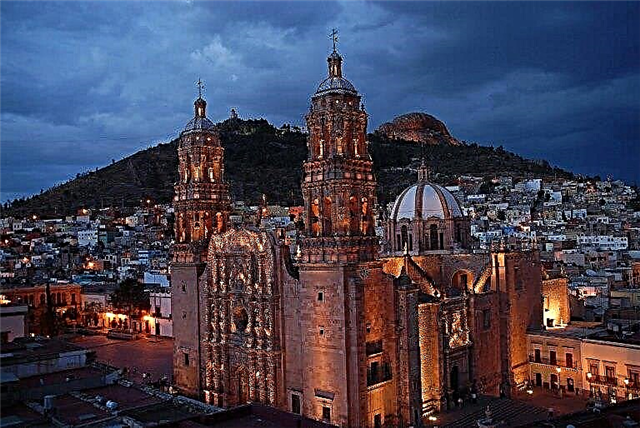
El cerro zacateco del Sombreretillo recuerda por su forma al sombrero tricornio de épocas pasadas y Sombrerete es un Pueblo Mágico que se domina desde la elevación. De su pasada riqueza por la explotación del oro y la plata quedó una hermosa arquitectura, en la que se distinguen sus templos y conventos. El Templo de Santo Domingo cuenta con una prolija fachada churrigueresca y valiosas pinturas en su interior. El Templo Parroquial es de fachada barroca con pinceladas platerescas y el Templo de la Tercera Orden es renacentista y cuenta con una rara bóveda interior. Cerca del pueblo está la Sierra de Órganos, frecuentemente utilizada como locación durante la época de oro del cine mexicano.
Si quieres conocer la guía completa de Sombrerete click here.
60. Tacámbaro, Michoacán
Pasó a la historia el 11 de abril de 1865, cuando las fuerzas republicanas derrotaron a las francesas en la Batalla de Tacámbaro. Cuenta con un santuario que venera a la Virgen de Fátima, famoso sobre todo por los cuadros de las llamadas 4 Vírgenes Refugiadas (las vírgenes de Polonia, Hungría, Lituania y Cuba), que cuentan con una vistosa festividad en el mes de octubre. Otros atractivos de este Pueblo Mágico michoacano son el Templo del Hospital, la Capilla de Santa María Magdalena y el Centro Cultural Amalia Solórzano
Si quieres conocer la guía completa de Tacámbaro click here.
61. Tapalpa, Jalisco
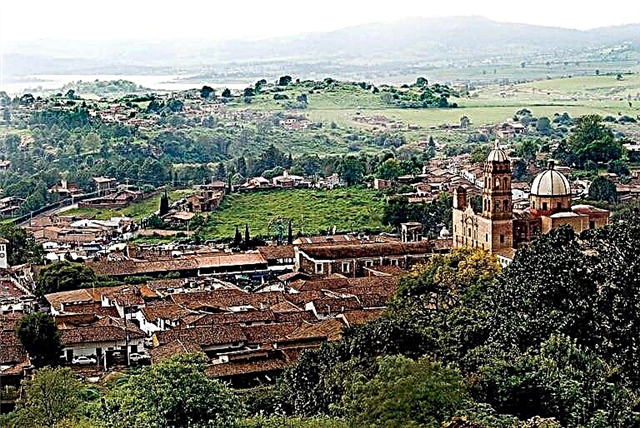
Entre robles, pinos y encinos, a 2.000 msnm está el pintoresco Pueblo Mágico de Tapalpa, de apacibles casas con techos de teja y artesanos maestros en el trabajo de la madera de sus bosques y de la lana de sus rebaños. Los jorongos y cobijas de lana de Tapalpa son conocidos a nivel nacional, así como sus piezas de madera tallada. En su arquitectura sobresalen la Iglesia de San Antonio de Tapalpa, el templo de Nuestra Señora de la Merced y la Capilla de la Soledad. Cerca de Tapalpa está la población de Juanacatlán, con sus hábiles talladoras de losas de piedra.
Si quieres conocer la guía completa de Tapalpa click here.
62. Tapijulapa, Tabasco
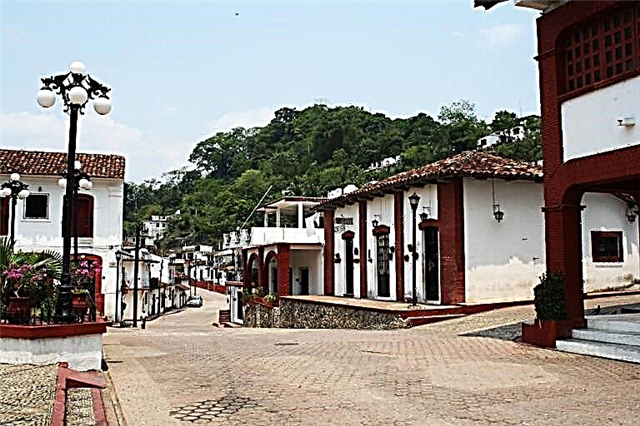
Con sus tierras bañadas por los ríos Amatán y Oxolotán, sus típicas calles empedradas y sus acogedoras casas con tejados de dos aguas, el Pueblo Mágico de Tapijulapa es un remanso de paz y verdor. Desde la cima de un cerro aledaño, el Templo de Santiago Apóstol, monumento histórico del siglo XVII, es el custodio espiritual de los tapijulapenses. Estos tabasqueños son diestros en la confección de muebles, cestería y otros objetos de ratán y mimbre.
La Cueva de las Sardinas Ciegas es un peculiar ecosistema formado por un arroyo dentro de una cueva, habitado por peces ciegos debido a la total oscuridad. El Desarrollo Ecoturístico «Kolem-Jaa» ofrece diversos entretenimientos, como tirolesa, canopea y rapel en cascada.
Si quieres conocer la guía completa de Tapijulapa click here.
63. Taxco, Guerrero
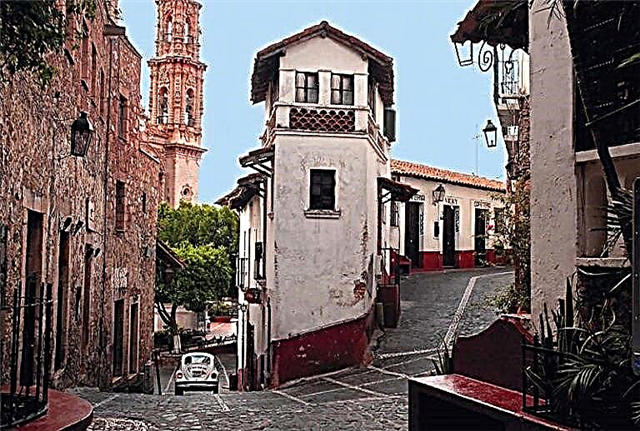
La blancura y belleza de Taxco de Alarcón sobresale desde la distancia en la falda de la serranía. La plata de las minas de Taxco se acabó, pero el talento de sus orfebres y artesanos para trabajar el metal es inagotable. Los visitantes del bello Pueblo Mágico guerrerense son observados por la monumental escultura del Cristo Redentor en el Cerro de Atachi y por los pináculos de las dos torres de la hermosa iglesia barroca novohispana de Santa Prisca. Este templo fue en su momento el edificio más alto de México. La Iglesia de la Santísima Trinidad es otra joya arquitectónica taxqueña.
Si quieres conocer la guía completa de Taxco click here.
64. Tecate, Baja California
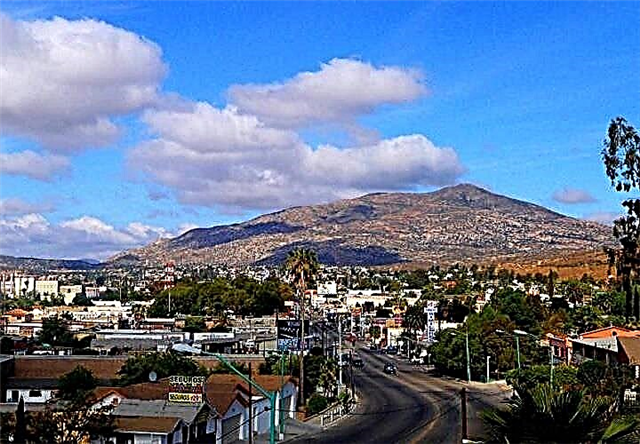
Aunque su existencia es anterior, cuando formaba parte de la Misión de San Diego, Tecate nació formalmente en 1863, año en que el presidente Benito Juárez decretó su fundación como colonia agrícola. Ahora es un Pueblo Mágico, amparado en el verdor de sus campos y montañas, la bondad de su clima y su ambiente tradicional. Otros atractivos de interés de la localidad bajacaliforniana son la Cervecería Tecate y la Ruta del Vino.
Si quieres concoer la guía completa de Tecate click here.
65. Tepotzotlán, México
Al norte del estado de México está este Pueblo Mágico, situado a escasos 44 kilómetros de la capital del país. En su centro histórico hay una majestuosa edificación en estilo novohispano levantada en el siglo XVIII, que es un emblema del barroco churrigueresco en el país: el antiguo Colegio de San Francisco Javier, actual sede del Museo Nacional del Virreinato.
Este museo recorre la historia de Nueva España y uno de sus majestuosos componentes arquitectónicos es la iglesia de San Francisco, que tiene un precioso altar. Otro lugar de interés es la Hacienda La Concepción, que se conserva tal como fue originalmente en el siglo XVIII. Los amantes de la naturaleza cuentan con el Parque Estatal Sierra de Tepotzotlán y el Parque Ecológico Xochitla.
Si quieres conocer la guía completa de Tepotzotlán click here.
66. Tepoztlán, Morelos
La celebridad de este Pueblo Mágico morelense proviene de El Tepozteco, un cerro con una leyenda prehispánica que se convirtió en una vistosa fiesta tradicional. La celebración tiene lugar entre finales de agosto y el 16 de septiembre, y además de ascender a la cumbre, incluye danzas y música típicas, con la animación y el colorido de las festividades ancestrales mexicanas. En la cima de El Tepozteco está una pirámide del siglo XII dedicada al dios de la embriaguez y del viento, Ometochtli Tepuztécatl.
Tepoztlán también ofrece los temazcales, unos baños de vapor según un método ancestral. Una tradición gastronómica de Tepoztlán es la de sus exóticos helados y cremas.
Si quieres conocer la guía completa de Tepoztlán click here.
67. Tequila, Jalisco
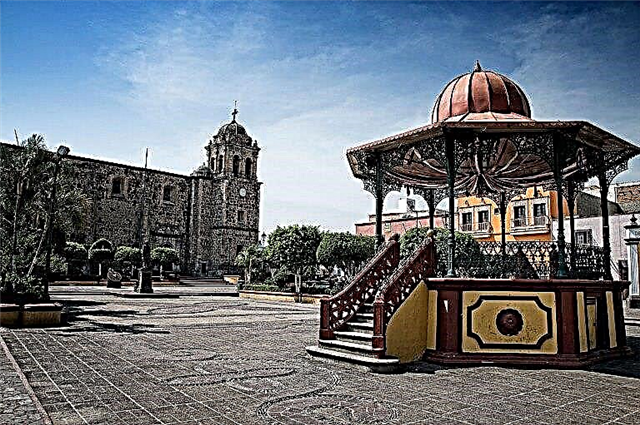
Los jaliscienses presumen de ser los mejores representantes de la cultura popular mexicana, por ser los bebedores más sabios del licor nacional; los ejecutores más diestros del deporte nacional, la charrería; y los mejores intérpretes de la música nacional, el mariachi. Habría que darles la razón y el Pueblo Mágico que lleva el nombre de la ancestral bebida tiene buena parte del mérito. Si quieres «entequilarte» a tope, durante la primera quincena de diciembre se lleva a cabo la Feria Nacional del Tequila. Si la resaca te permite dar algunos paseos, te recomendamos conocer las haciendas y destilerías, y el Museo Nacional del Tequila.
Si quieres conocer la guía completa de Tequila, Jalisco click here.
68. Tequisquiapan, Querétaro
Es un Pueblo Mágico queretano muy acogedor, por sus estrechas calles adoquinadas y sus pintorescas casas con ventanas de hierro forjado, resaltadas por el púrpura de las buganvillas. El Templo de Santa María de la Asunción es el símbolo religioso y arquitectónico de la localidad. Es una edificación de fachada neoclásica, cuya historia comenzó en el siglo XVI. Otros atractivos son el Museo del Queso y el Vino, delicias gastronómicas que también cuentan con una feria. Situada a solo dos horas de Ciudad de México, en una excelente opción de fin de semana para los capitalinos.
Si quieres conocer la guía completa de Tequisquiapan click here.
69. Teúl de González Ortega, Zacatecas
Este tranquilo pueblo colonial zacatecano vive de la agricultura, la cría y el turismo. Dos figuras están ligadas a la historia del pueblo; una es Teul González Ortega, destacado militar y político que da nombre a la localidad y que se distinguió durante la Guerra de Reforma, y el general Trinidad Cervantes, participante en la Revolución Mexicana.
Los teulenses han desarrollado unas excelentes plantaciones de agave azul que abastecen a varias destilerías. El Pueblo Mágico cuenta con varios sitios de interés como la Plaza de Armas, el Museo Municipal y los Portales Trinidad Cervantes.
Si quieres conocer la guía completa de Teul De González Ortega click here.
70. Tlatlauquitepec, Puebla
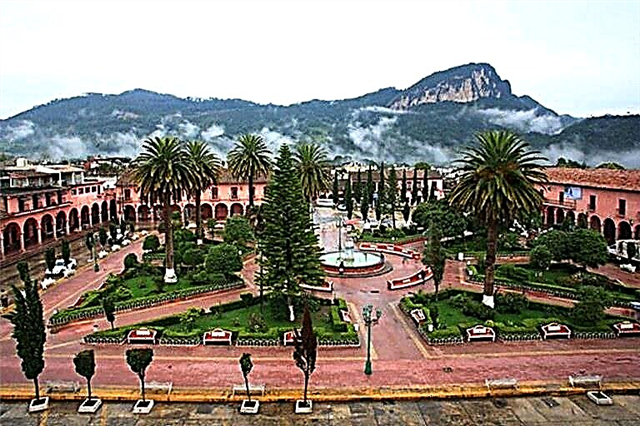
Este Pueblo Mágico enclavado en la Sierra Norte de Puebla brinda al visitante sus hermosos y bien conservados monumentos arquitectónicos. Entre estos sobresalen sus coloridas calles del casco histórico, el ex convento franciscano de Santa María Tlatlauquitepec, que tiene la particularidad de haber sido el primero de paso en América y el Santuario del Señor de Huaxtla. Los tlatlauquenses cuentan con una interesante tradición de elaboración de licores ligeros a base de frutas y hierbas, y los hacen de capulines (Cerezas de Virginia), manzanas, toronjil y otras especies. Cada productor artesanal presume de tener la receta original de «Yolixpa el Todopoderoso» un brebaje que lleva más de 20 hierbas.
Si quieres conocer la guía completa de Tlatauquitepec click here.
71. Tlayacapan, Morelos
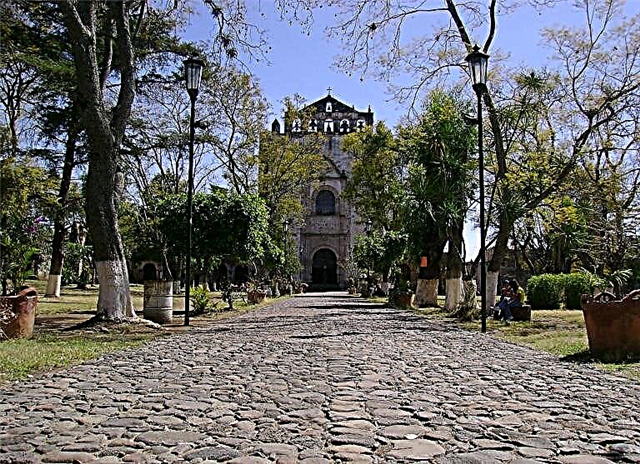
En este Pueblo Mágico morelense se originó la música y la vestimenta típica utilizadas en el Baile del Chinelo, una coreografía que se ha hecho popular en los carnavales y otras festividades de los pueblos de Morelos. El Ex Convento de San Juan Bautista es un edificio agustino del siglo XVI, en cuya iglesia hay un museo de cuerpos momificados de personas que fueron enterradas en el templo.
En las afueras están las ruinas de la Hacienda de San Nicolás, la cual, según la tradición, perteneció al conquistador Hernán Cortés. En los tiempos prehispánicos y coloniales, Tlayacapan estaba en el camino principal a Tenochtitlán, por lo que disponía de fábricas de velas. En una de estas antiguas fábricas funciona ahora el Centro Cultural La Cerería.
Si quieres conocer la guía completa de Tlayacapan click here.
72. Tlalpujahua, Michoacán
Tlalpujahua de Rayón honra a Ignacio López Rayón, el Insurgente que fue secretario de Miguel Hidalgo y que encabezó el movimiento independentista tras la muerte del sacerdote. Durante tres siglos, el pueblo derrochó riqueza como producto de la explotación de sus minas de oro y plata, y de la época de esplendor quedan algunos emblemas. El más importante es la Iglesia de San Pedro y San Pablo, un hermoso templo del siglo XVIII. Otros sitios de interés son el Museo Hermanos López Rayón y la Mina Dos Estrellas, que alberga un museo que exhibe las herramientas y demás cosas que se utilizaban en la minería del siglo XIX.
Si quieres conocer la guía completa click here.
73. Todos Santos, Baja California Sur
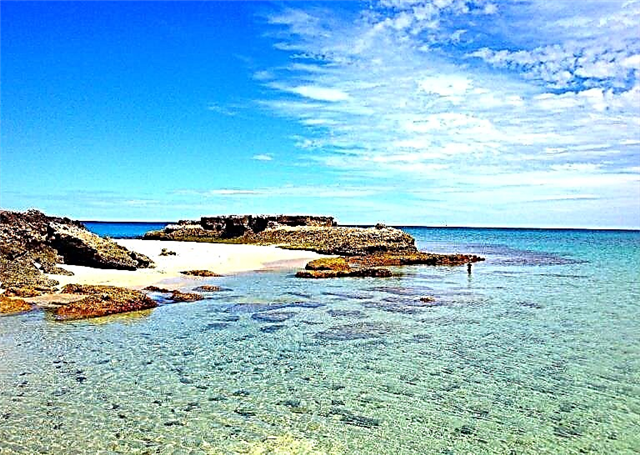
Este Pueblo Mágico es de interesantes contrastes. Por un lado su agradable clima, casi siempre primaveral, y sus campos llenos de verdor y de árboles frutales, como aguacates, mangos y papayas. Por otro lado, la intensidad del océano, con magníficas playas para surfear. El pueblo sudcaliforniano tiene un dulce pasado, ya que fue un importante centro de cultivo de la caña de azúcar y llegó a tener hasta 8 ingenios azucareros en funcionamiento. De esa época decimonónica datan sus más bellas edificaciones. Es un pueblo de una intensa vida cultural, dado que sus confortables condiciones han atraído a mucha gente del mundo de las bellas artes.
Si quieres conocer la guía completa de Todos Santos click here.
74. Tula, Tamaulipas
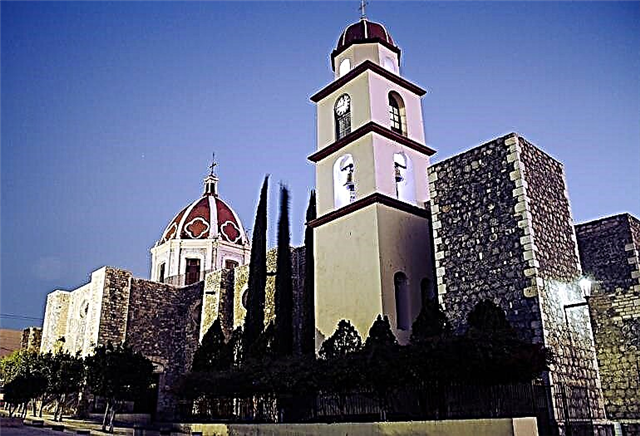
La cuera comenzó siendo una humilde chamarra de piel de becerro con la que los vaqueros se protegían de las espinas y el ramaje, y terminó como la pieza de vestir que simboliza al estado de Tamaulipas. Se originó en el ahora Pueblo Mágico de Tula.
El Templo de San Antonio de Padua es el del siglo XVIII y cuenta con un reloj de la época del Porfiriato. Otras edificaciones relevantes son la Casa de la Cultura, el Monumento a Fray Juan Bautista de Mollinedo, la Casa Minerva y la Capilla del Rosario. Cerca de Tula está el emplazamiento arqueológico de Tammapul, cuya principal pieza es El Cuizillo, una edificación circular de 12 metros de altura.
Si quieres conocer más click here.
75. Tzintzuntzan, Michoacán
Es un lugar de singular importancia prehispánica, tras ser sede del Señorío de Michhuaque y luego capital del imperio que el pueblo purépecha constituyó en parte de los territorios de los actuales estados de Jalisco, Guanajuato y Michoacán. En el sitio arqueológico se conserva un centro ceremonial. Del periodo virreinal destaca el conjunto conventual de San Francisco, cuyos centenarios olivos habrían sido sembrados por el primer obispo de Michoacán, Vasco de Quiroga.
Si quieres conocer la guía completa click here.
76. Valladolid, Yucatán
Quien quiera conocer las principales ciudades de la península yucateca y sus principales sitios arqueológicos, bien podría alojarse en este apacible Pueblo Mágico, equidistante poco más de 150 kilómetros tanto de Cancún como de Mérida, y más cerca aún de Chichén Itzá, Tulum, Cobá y Ek Balam. En este Valladolid americano hay que admirar sus iglesias, parques y el Ex Convento de San Bernardino. Entre los templos sobresalen el de San Gervasio, el de San Bernandino de Siena y el de Santa Lucía.
Si quieres conocer más de este pueblo click here.
77. Valle de Bravo, México
El Valle muestra su atractivo colonial, realzado por la amabilidad de los vallesanos y la belleza de su laguna. La laguna es un cuerpo de agua rodeado de áreas verdes, con actividades acuáticas y terrestres para todos los gustos. Los aficionados a los entretenimientos de tierra pueden pasear, hacer excursionismo, montañismo, ciclismo de montaña y cosas algo más arriesgadas. En la laguna, si estás de suerte, pueda que pesques una trucha.
A principios de noviembre, coincidiendo con el Día de los Muertos, se celebra el Festival de las Almas. Muy cerca de Valle de Bravo está el asentamiento de Avándaro, que tiene una preciosa cascada llamada Velo de Novia.
Si quieres conocer más de Valle de Bravo click here.
78. Viesca, Coahuila
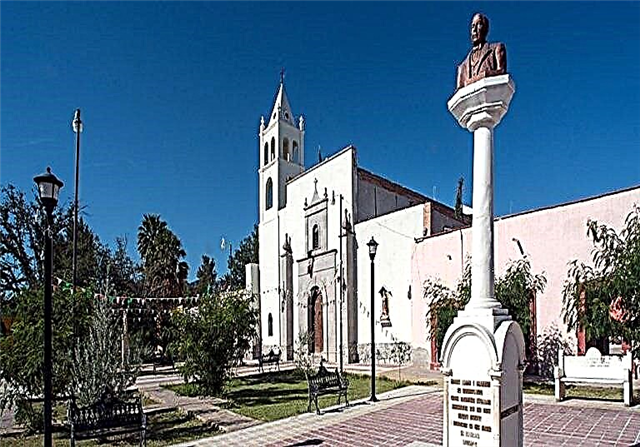
Cuando todavía la localidad se llamaba Álamo de Parras, el Padre de la Independencia, Miguel Hidalgo, pasó por ella, escapando de la persecución de las fuerzas realistas. A su rico pasado, la localidad coahuilense une un presente de Pueblo Mágico, apuntalado por atractivos tanto naturales como culturales. Las Dunas de Bilbao es una zona desértica frecuentada por los entusiastas de los entretenimientos de motor y en el pueblo destacan varias edificaciones, entre las que se encuentran la Iglesia de Santiago Apóstol y el Museo de Arte Sacro. No dejes de probar el exquisito dulce de leche quemada elaborado por los coahuilenses de Viesca.
Si quieres conocer guía completa de Viesca click here.
79. Xico, Veracruz
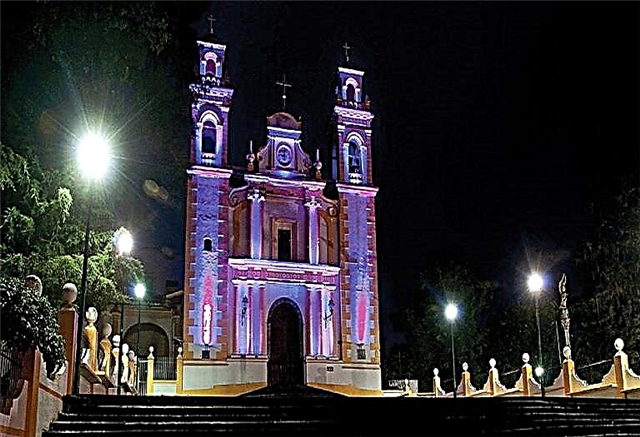
Los pobladores de Xico son laboriosos, pero cuando es hora de celebrar, se divierten a lo grande. En La Xiqueñada se sueltan toros de lidia por el pueblo, en medio del jolgorio de las Ferias de Santa María Magdalena, que se celebra en julio. En toda ocasión, estos veracruzanos beben la Morita de Xico, una bebida alcohólica preparada con moras recogidas en sus fértiles campos. Cuando no está de fiesta, Xico es un pueblo apacible, rodeado de montañas y cafetales que invitan a degustar un buen café en total relax.
Si quieres conocer más de este pueblo click here.
80. Xicotepec,Puebla
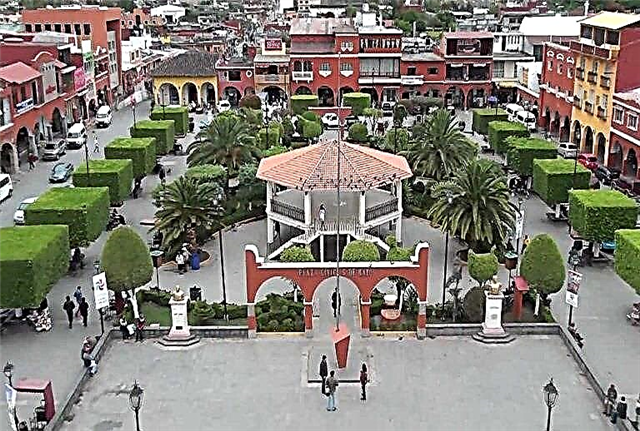
Un hecho fortuito convirtió a esta pequeña ciudad poblana en la capital simbólica de la República Mexicana por unos breves días. Tras ser asesinado en Tlaxcalantongo el 21 de mayo de 1920, el presidente Venustiano Carranza fue trasladado a Xicotepec, donde se practicó la autopsia en la ahora llamada Casa Carranza, que alberga un museo conmemorativo. El zócalo del Pueblo Mágico cuenta con un bello jardín y en su arquitectura resaltan la Iglesia de San Juan Bautista y el Palacio Municipal. Otros sitios de interés son el Centro Ceremonial Xochipila y el Centro Botánico El Ángel de tu Salud.
Si quieres conocer la guía completa de Xicotepec click here.
81. Xilitla, San Luis Potosí
En este lugar situado en pleno corazón de la Huasteca Potosina se respira arte y aromas de café. El pueblo es hermoso y tranquilo, con su húmedo verdor, sus riachuelos y sus pozas. El rico artista escocés Edward Jones quedó cautivado por Xilitla y construyó en el ahora Pueblo Mágico su espectacular jardín surrealista, una obra como pocas en el mundo integrando arte y naturaleza. El monumental conjunto escultórico y arquitectónico se encuentra diseminado por un bello espacio de 300.000 metros cuadrados. Algunas de las obras consustanciadas con el paisaje de arboledas, jardines, riachuelos y cascadas son La recámara con techo en forma de ballena, LaCasa de los Peristilos y La escalera al cielo.
Si quieres conocer la guía completa de Xilitla click here.
82. Yuriria, Guanajuato
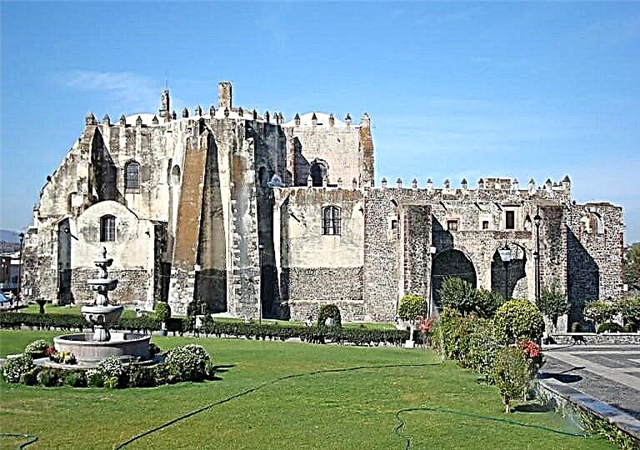
Yuriria es un Pueblo Mágico guanajuatense, rodeado de verdor y de lugares de interés. La Laguna de Yuriria fue la primera obra hidráulica de envergadura realizada en América Latina y su malecón invita a dar un tranquilo paseo. El Ex Convento Agustino de San Pablo y su templo datan de finales del siglo XVI y las antiguas capillas también son lugares de interés, así como el volcán extinto de La Joya. La vistosa festividad en honor del Señor de la Preciosa Sangre de Cristo tiene lugar el 4 de enero e incluye un desfile nocturno con música, danzas y carros alegóricos.
Si quieres conocer más click here.
83. Zacatlán, Puebla
Buena parte de la vida de este Pueblo Mágico poblano gira en torno a las manzanas, que se cultivan en esta zona desde tiempos antiguos, por lo que la localidad también es llamada Zacatlán de las Manzanas. La tradición se extiende a la sidra, la suave bebida alcohólica preparada con la fruta, recibiendo el pueblo el reconocimiento como la «Cuna de la Sidra de México» En la semana del 15 de agosto se celebra la principal festividad, la Feria de la Manzana.
En el pueblo, sobresalen arquitectónicamente el Ex Convento de San Francisco, la Iglesia de San Pedro y San Pablo, y el Reloj Floral. En el cercano Valle de las Piedras Encimadas hay un curioso monolito natural que parece formado por piedras superpuestas, pero que en verdad ha sido esculpido por la erosión.
Si quieres conocer más de este pueblo mágico haz click aquí.
84. Aculco, México
Aculco te espera con sus acogedoras calles, sus cascadas y sus leyendas. Hay que tomarse el tiempo necesario para hablar con los pobladores y estimularlos a referir las historias de El Lobo del Señor San Jerónimo y El Campanero y su Amante.
En las faldas de las montañas, entre espectaculares peñascos y descendiendo por impresionantes paredes rocosas, están las cascadas de Aculco, entre las que destacan La Concepción y Tixhiñú. El pueblo es de casas tradicionales, de amplios espacios para estar y circular. Los centros espirituales son la iglesia de San Jerónimo y el Santuario del Señor de Nenthé.
Si quieres conocer la guía completa de Aculco click here.
85. Atlixco, Puebla
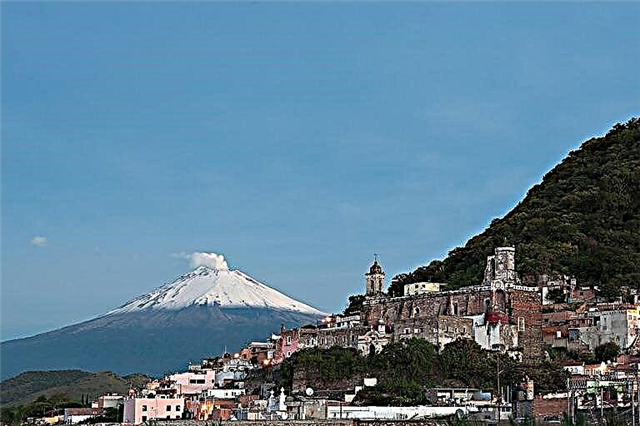
Este Pueblo Mágico poblano fue escenario, el 4 de mayo de 1862, de la Batalla de Atlixco, en la que el ejército republicano derrotó a fuerzas conservadoras nacionales que defendían la intervención francesa en México. Entre sus atractivos destacan el Palacio Municipal y sus murales. El Hospital Municipal y Pinacoteca San Juan de Dios es una de las pocas edificaciones coloniales que sigue prestando servicios hospitalarios y cuenta con una muestra pictórica sobre la vida del santo. El último domingo de septiembre se realiza en el cerro San Miguel el Huey Atlixcáyotl, un festival folclórico con componentes prehispánicos y cristianos.
Si quieres conocer más click here.
86. Candela, Coahuila
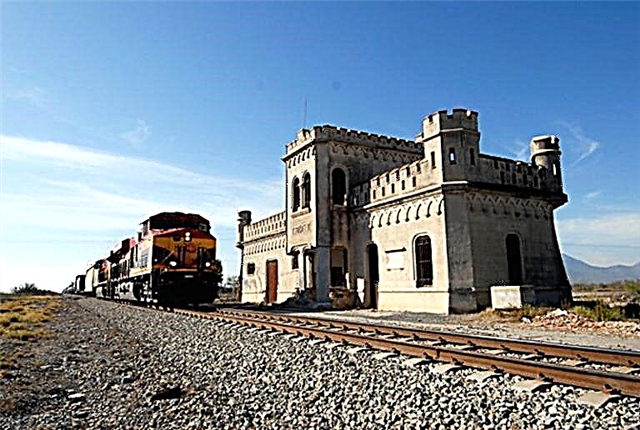
No se sabe con certeza si el Pueblo Mágico de Candela se llama así por sus aguas calientes o por la forma de un picacho cercano. Ojo Caliente es un balneario de cristalinas aguas termales a las que los amables locales atribuyen poderes de sanación. Los Carricitos es un espacio natural para pasar un rato de relax y acampar. Otros atractivos de esta localidad coahuilense son la Mesa de Cartujanos, una meseta de 17.000 hectáreas, y la vieja estación pueblerina del ferrocarril México-Laredo, cuyo edificio data de hace 105 años y fue recientemente rescatado.
Si quieres conocer más click here.
87. Casas Grandes, Chihuahua
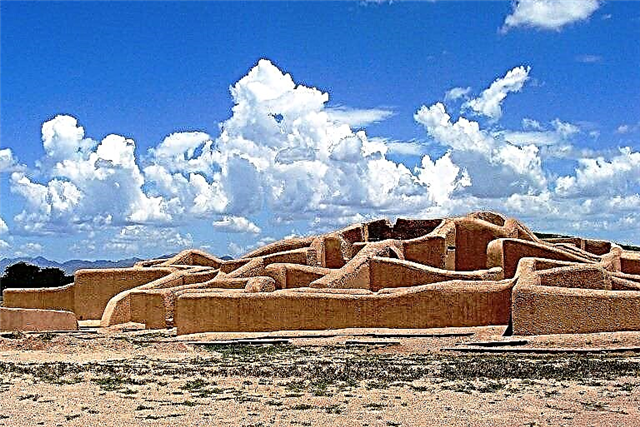
El principal atractivo de este Pueblo Mágico situado en medio del desierto chihuahuense es el cercano sitio arqueológico de Paquimé, que se extiende a lo largo 50 hectáreas y es Patrimonio de la Humanidad desde 1998. Otro yacimiento arqueológico cercano es Cueva de la Olla, así nombrado porque cuenta con una estructura redondeada, semejante a una gran vasija.
En el Museo de las Culturas del Norte se exhiben piezas relacionadas con las antiguas civilizaciones de esa zona del país, especialmente de la Paquimé. La localidad es escenario de encuentros culturales entre los pueblos indígenas de los territorios cercanos de México y Estados Unidos.
Si quieres conocer más click here.
88. Coscomatepec, Veracruz
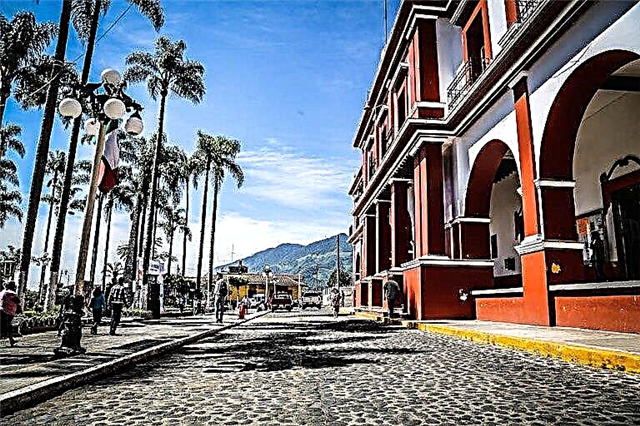
Desde la cima del Citlaltépetl o Pico de Orizaba, la montaña más alta de México, debe haber una espectacular vista, incluyendo al pueblo de Coscomatepec. Lamentablemente, son pocos los privilegiados que pueden ascender los 5.610 msnv hasta la cumbre.
Abajo, Coscomatepec recuerda su brillante historia, particularmente, los 33 días que la localidad estuvo sitiada por las fuerzas españolas en 1813 durante la Guerra de Independencia y el Brigadier Nicolás Bravo rompió el sitio al mando de 600 bravos Insurgentes.
Los pobladores de Coscomatepec arrancan frescas hortalizas y verduras de las fértiles tierras de las faldas del volcán y son hábiles artesanos en la confección de sillas de montar y otras piezas de cuero.
Si quieres conocer más click here.
89. Guerrero, Coahuila
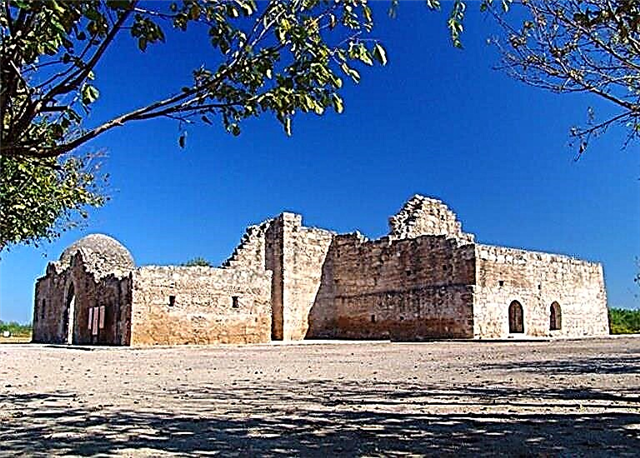
La localidad coahuilense de Guerrero es Pueblo Mágico por su rica historia. Una de sus principales referencias es la Misión de San Bernardo, erigida por los franciscanos a comienzos del siglo XVIII, desde donde los frailes salían a evangelizar por el actual territorio del estado de Texas. En su centro histórico sobresalen sus sobrias casonas coloniales. Otros sitios de interés son el Parque Ecológico de La Pedrera y el lago El Bañadero.
Si quieres conocer más click here.
90. Huauchinango,Puebla
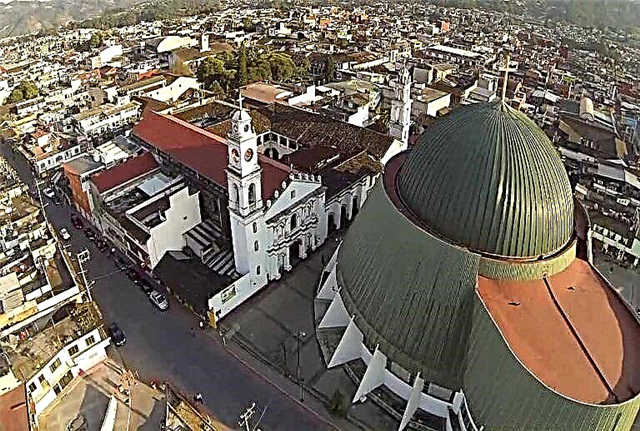
El pueblo de Huauchinango deriva su magia principalmente de sus hermosas y variadas flores. En épocas de floración, la localidad es una colorida sinfonía del blanco de los jazmines y de las magnolias, el rosa y el rojo de las azaleas, y de todas las tonalidades que ofrecen orquídeas, dalias, camelias,tulipanes, begonias y otras flores. La Feria de las Flores comienza el primer domingo de la Cuaresma y reúne, aparte de muchas flores, espectáculos musicales y folclóricos y otras atracciones.
En el horizonte arquitectónico de este Pueblo Mágico poblano sobresalen el Santuario de Nuestro Señor en su Santo Entierro, patrono de la localidad; el Palacio Municipal y el Templo de Santa María La Asunción, con una cúpula de 84 metros de diámetro.
Si quieres conocer más click here.
91. Huautla de Jiménez, Oaxaca
Más que Mágico, podría decirse que este pueblo oaxaqueño es «Alucinógeno» gracias a su ciudadano más conocido, la curandera y sacerdotisa María Sabina, ya convertida en toda una celebridad mundial. La indígena mazateca y su pueblo natal, Huautla de Jiménez, deben su fama a la difusión de las propiedades curativas, supuestamente milagrosas, de los hongos alucinógenos. El 22 de julio, aniversario del nacimiento de María Sabina, se inicia una semana cultural indígena, en la que se reúnen los principales curanderos de la región.
Entre los atractivos naturales del pueblo se encuentran las Grutas de San Agustín y la Cascada Velo de Novia.
Si quieres conocer más click here.
92. Isla Mujeres, Quintana Roo
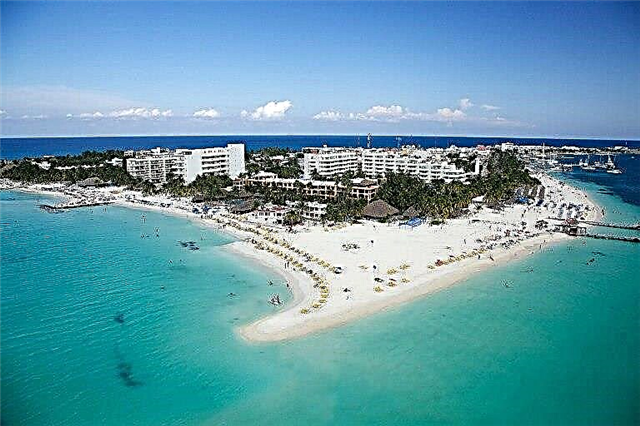
Ixchel era la deidad del amor adorada por los mayas, quienes le ofrendaban imágenes femeninas. Los primeros conquistadores españoles que llegaron al lugar se extrañaron de encontrar tantas figuras de mujer, dándole el nombre de Isla Mujeres. Ahora la isla es un Pueblo Mágico que conserva la seducción de sus orígenes.
Isla Mujeres, a solo 13 kilómetros de Cancún, reúne atractivos prehispánicos, como el Observatorio Maya; playas caribeñas paradisíacas, museos y una exquisita gastronomía. Una de las especialidades isleñas es el tikin-xik, un pescado condimentado con chiles y achiote y horneado envuelto en hojas de banano. Otra delicia culinaria de Isla Mujeres es el ceviche de caracoles.
Si quieres conocer la guía completa click here.
93. Ixtapan de la Sal, México
Este Pueblo Mágico de herencia matlatzinca sobresale por sus balnearios, amparado en sus aguas termales y su agradable temperatura, sin variaciones muy pronunciadas a lo largo del año. Sus cálidas aguas encantaron a los conquistadores españoles, quienes plantaron su iglesia y sus casas en el lugar. También cuenta con interesantes puntos arqueológicos, entre las que se encuentran Malinaltenango y Ahuacatitlán.
In the architecture of the town the temple of the Assumption of Mary stands out and the main religious festival is that of the Lord of Forgiveness, on the second Friday of Lent.
If you want to know more click here.
94. Linares, Nuevo Leon
Linarenses have achieved world renown for their glories and marquettes, the delicious sweets made of burnt goat and cow's milk, with nuts, made from fresh dairy products produced on the local farms. Other delicacies made by these New Leonese are cheeses, dried meat and other derivatives of their rich livestock. In the city the Municipal Palace, the Cathedral of San Felipe Apóstol, the Colonial Aqueduct and the Temple of the Lord of Mercy stand out.
In the old Hacienda de Guadalupe, the Faculty of Earth Sciences of the Autonomous University of Nuevo León operates, another place of interest.
If you want to know more click here.
95. Mascota, Jalisco
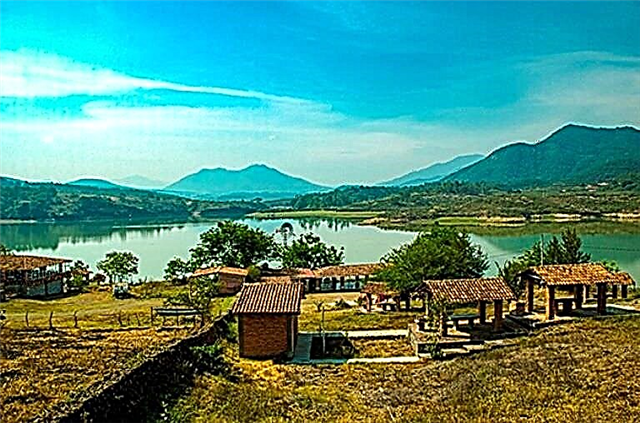
This Magical Town of Jalisco has interesting religious buildings and museums, and beautiful natural spaces. The State Museum of Archeology collects an archaeological sample of the place and the El Molino Museum exhibits the stones that were used in the milling, as well as the weighing scales. The Basilica of Our Lady of Sorrows is a 17th century church dominated by the Baroque and the unfinished Temple of the Precious Blood of Christ dates from the 19th century.
Going outdoors, in Mascota you can admire the Laguna de Juanacatlán, which is nestled in the crater of a volcano and is an excellent place for fishing, and La Laguna de Yerbabuena, where you can spot ducks and geese.
If you want to know the complete guide click here.
96. Mazunte, Oaxaca
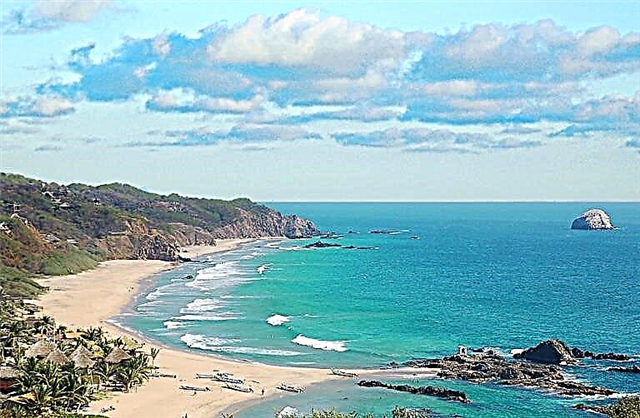
Named for the blue crab found in abundance in this area, the Magic Town of Mazunte, located in the Pacific of Oaxaca, is also famous for its turtles. It is a place of beautiful beaches, being Playa Rinconcito and Playa Bermejita among the most recognized.
Mazunte is home to the Centro Mexicano de la Tortuga, where the Living Turtle Museum and the Central Aquarium are located, where different varieties of sea turtles are exhibited, without a doubt a fascinating experience. If you are lucky, you may have to live the emotional moment of the release of hatchlings into the ocean, their natural habitat.
If you want to know more click here.
97. Mocorito, Sinaloa
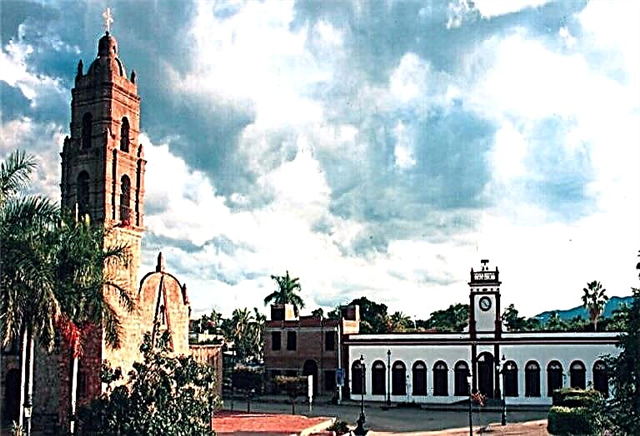
This Magical Town in the state of Sinaloa has beautiful old buildings worthy of admiration, one of them being the Church of the Immaculate Conception, built by the Spanish in the 18th century. The Mocorito river is frequented by its spas. Mocorito is considered the place of origin of the northern drum and music bands and is the territory of great performers and groups.
Other places of interest are the House of Thousand Pictures, the Reforma Pantheon and the La Estancia Archaeological Zone, where remains were found in pre-Hispanic urns.
If you want to know more click here.
98. Orizaba, Veracruz
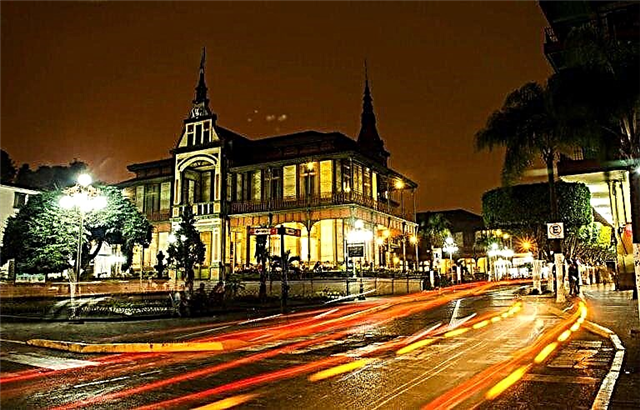
With the highest mountain in Mexico guarding it, this Veracruz city offers a wide variety of attractions, such as churches, convents, palaces, theaters, parks and museums. The main temple of the city is the beautiful Cathedral of San Miguel Arcángel. The Iron Palace, designed by Gustave Eiffel, is the highest expression of Art Nouveau in the country and is the only one in the world with a metal structure in that style.
The Great Ignacio de la Llave Theater is a neoclassical building with an imposing interior. The State Art Museum exhibits works by Diego Rivera and other artists. Orizaba also has a modern cable car, in which you can enjoy a beautiful view of the city, more than 300 meters high.
If you want to know more about this city click here.
99. Palenque, Chiapas
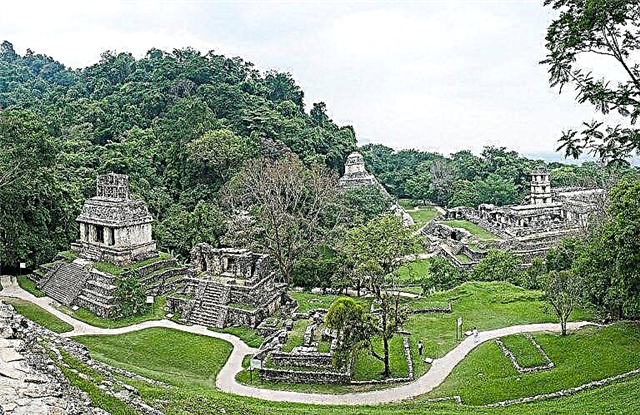
It is one of the most complete and best-preserved Mayan archaeological sites in Mesoamerica, despite the fact that it has only been partially unearthed. Among the main buildings that have been rescued from the rainforest are the Temple of Inscriptions, the Temple of the Sun, the Temple of La Calavera, the Temple of La Cruz, the Observatory, the Palace and the Temple of the Count. Some decorative elements show the artistic talent of the Mayans, such as the bas-reliefs of Pakal the Great, a Mayan character from the 7th century.
Other attractions of Palenque are its waterfalls, among which Agua Azul, Misol-Ha and Agua Clara stand out.
If you want to know more about Palenque click here.
100. San Joaquín, Querétaro
The huasteco huapango is popular in several Mexican states, but the symbolic capital of the well-known Mexican folk music and dance genre is the Queretaro town of San Joaquín, where the Contest is held.
Nacional de Huapango the first weekend of April. Another tradition of the Magic Town of San Joaquín, in the middle of the August festivities, in the celebration of the so-called «Largest Picnic in Latin America» Very close to the town is the Archaeological Zone of Ranas, a set of churches, squares and playing fields ball, belonging to the early classical period. Other places of interest in San Joaquín are the El Durazno Waterfalls and Rock Paintings and the Maravillas Waterfalls.
Click here to learn more.
101. San José de Gracia, Aguascalientes
The history of this Magical Town is sadly and happily marked by its prey. The first large storage of irrigation water in the Aguascalientes Valley was concluded in 1928, but the level of the liquid ended up covering the old town, so its inhabitants had to abandon it.
But thanks to the tenacity of many of the inhabitants, the new town that is now Pueblo Mágico was founded.
In a prominent place of the dam stood the gigantic sculpture of the Broken Christ, which at 25 meters is one of the 5 largest in Mexico. Christ is missing his right leg, as a symbol of the past suffering of the people and constitutes a place of pilgrimage for the sick.
If you want to know more about this magical town click here.
102. San Juan Teotihuacán, Mexico
Since 2015, it has been a Mexican Magic Town together with its neighboring San Martín de las Pirámides. The famous Pyramids of Teotihuacán are in this municipality. The three great emblems of the archaeological zone are the Pyramid of the Sun, the Pyramid of the Moon and the Temple of Quetzalcóatl.
The largest structure is the one dedicated to the Sun, also one of the highest in Mesoamerica. One of the challenges for tourists is to climb its 63.55 meters and see the immensity from the top. The Temple of Quetzalcóatl is the lowest building, but it is very interesting from an architectural point of view, with its artistic details.
If you want to know more click here.
103. San Martín de las Pirámides, Mexico
Together with San Juan Teotihuacán, its sister municipality, it integrates a Magic Town, both guarding the valuable archaeological zone. Other monuments of interest in the town itself are the Church of San Martín Obispo de Tours and the Ecce Homo Church.
One of the great attractions of San Martín de las Pirámides is the National Fair of La Tuna, aimed at preserving and promoting the uses of this typical Mexican fruit. The regional gastronomy is impregnated by the tuna and the nopal, used in stews, desserts and other traditional dishes.
To know more about this town click here.
104. San Pablo Villa Mitla, Oaxaca
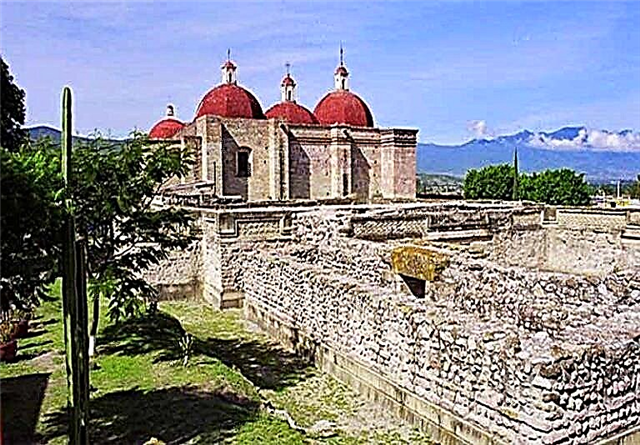
This town owes its name of Pueblo Mágico to the nearby archaeological site of Mitla, the second most important pre-Hispanic Oaxacan site after Monte Albán. In the impressive Zapotec complex, the Palace, the Hall of Columns, tombs, patios and even a Christian church built on the ceremonial center stand out as a symbol of the submission of pre-Columbian civilizations. In the colonial town, the building of the Municipal Palace stands out.
To know more about this town click here.
105. San Pedro and San Pablo Teposcolula, Oaxaca
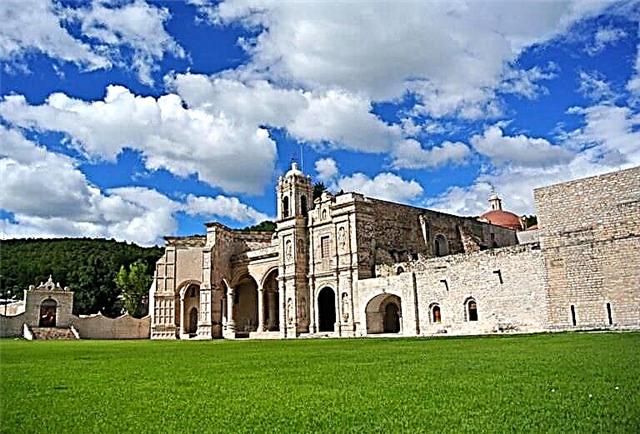
This peaceful Oaxacan Magic Town stands out for its religious colonial architecture, its squares and green spaces that invite you to relax and its folkloric manifestations. The temple and ex-convent of San Pedro and San Pablo is a sober 16th century complex built in stone, with sculptures on the façade, while inside an altarpiece and a carved confessional stand out. One of its most important festivals is celebrated on the first Friday of Lent, in honor of the Lord of the Stained Glass. They also have an original version of the Danza de las Mascaritas.
If you want to know more click here.
106. Sayulita, Nayarit
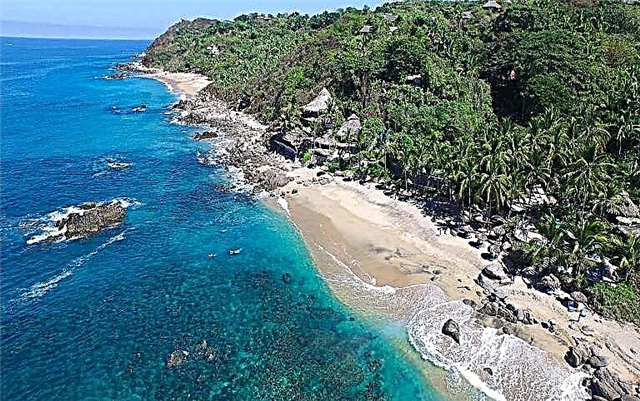
This Magical Town of Nayarit is one of the surfers' temples in the Mexican Pacific. Sayulita is an almost obligatory stop on the way to the Bay of Banderas for its paradisiacal beaches of fine white sand and the attraction of whale watching and other species by nature lovers. To the above, we must add the possibilities of practicing aquatic and land entertainment and the delicious cuisine based on fish and seafood. Lovers of nightlife enjoy the excellent atmosphere of Sayulita's clubs and bars.
If you want to know more about Sayulita click here.
If you want to know the 15 best things to do in Sayulita click here.
107. Talpa de Allende, Jalisco
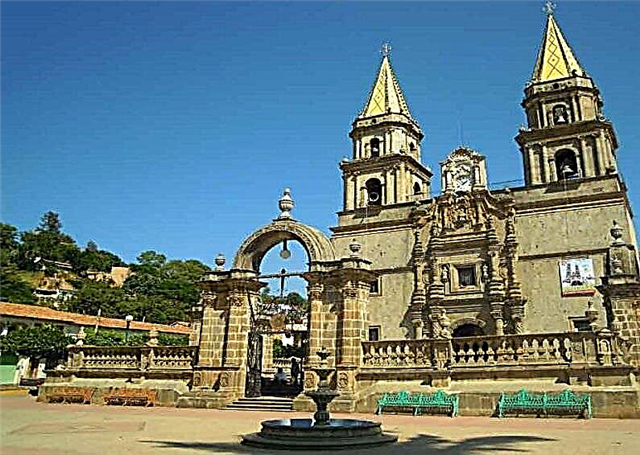
Talpa de Allende is a Mexican pilgrimage site to venerate Our Lady of the Rosary of Talpa, an image that arrived in the town in 1585, to which hundreds of miracles are attributed. The Pilgrim Route, which crosses several mountains of the Sierra Madre Occidental until it reaches the Basilica of the Virgin, has more than 200 years of routes. Other places of interest in the town are the temple of Señor San José, several chapels (Concepción del Bramador, Mineral de El Cuale, and La Resurrección) and the Municipal Palace.
If you want to know more about this town click here.
108. Tecozautla, Hidalgo
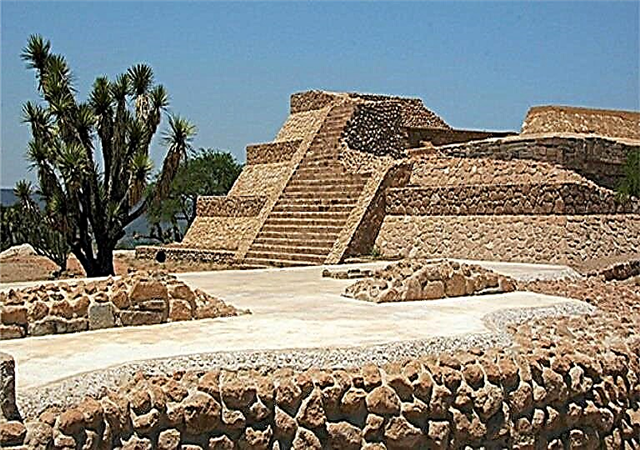
This Magical Town of Hidalgo has hot springs whose average temperature ranges between 35 and 38 degrees, so its spas are very popular. Its main natural attraction is an atypical geyser whose outlet temperature is 95 degrees, very close to the boiling point of water. In the past, the first geothermal well in Latin America was drilled in the area for the generation of energy through this route. Later, the area became a recreational and healing space due to its warm waters.
In the town, the most significant monuments are the Ex Convent of the Franciscans and the Torreón de Tecozautla, a tower dating from the Porfirian Era.
If you want to know the complete guide to Tecozautla click here.
109. Tlaxco, Tlaxcala
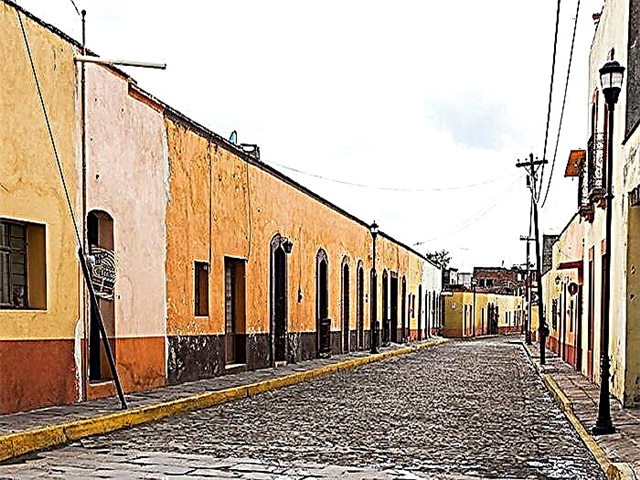
This small city in the north of Tlaxcala enjoys a privileged climate because it is located at 2,500 meters above sea level in the highlands of central Mexico. Its tourist attraction is also based on its beautiful natural spaces, such as timber forests, mountains, streams and lagoons. It was the scene of important events during the War of Independence and the War of the Reform.
It has a great tradition of making artisan cheeses and in its main festival, in honor of San Agustín, between July and August the Cheese, Wood and Pulque Fair is celebrated.
If you want to know the complete guide to Tlaxco click here.
110. Tulum, Quintana Roo
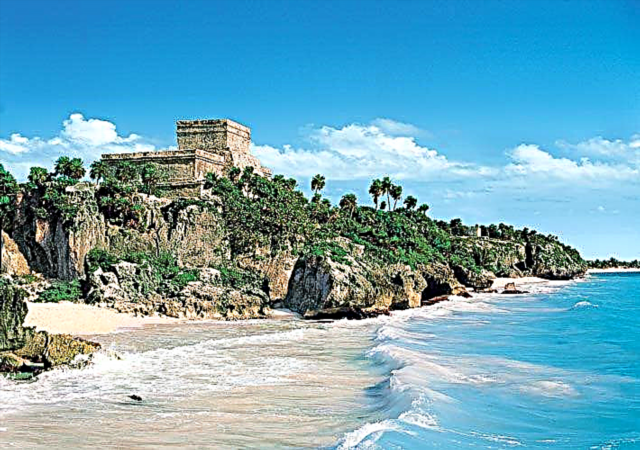
Tulum means "dawn" in the Mayan language, undoubtedly because of the spectacular sunrises that captivated the indigenous people. The Caribbean beauty and luminosity of the place remain the same, reasons why Tulum is a Magical Town of Quintana Roo. The Mayans built a walled city of which ruins are preserved, El Castillo being the most emblematic piece. It is believed to be a lighthouse that helped Mayan navigators avoid the extensive barrier reef that runs along the riviera. The Temple of the Frescoes is a display of the skills of the Mayans as artists.
In the modern city of Tulum you can get a convenient accommodation, unless you prefer to stay in Cancun and travel about 120 kilometers. Near Tulum there are fantastic cenotes and beaches.
If you want to know the complete guide to Tulum click here.
111. Villa del Carbón, Mexico
The name of this Magic Town comes from its past as a supplier of charcoal, when this material was essential for daily life. The main tourist attractions of the Villa are its bodies of water, which visitors come to camp and practice sport fishing. It is a cozy wooded area, ideal for ecotourism activities, such as hiking and observing nature.
Villa del Carbón artisans are very skilled at working with hides, which they turn into beautiful shoes, boots, jackets and other pieces. They are also very fond of charrería luck.
If you want to know the complete guide to Villa Del Carbón click here.
112. Zozocolco, Veracruz
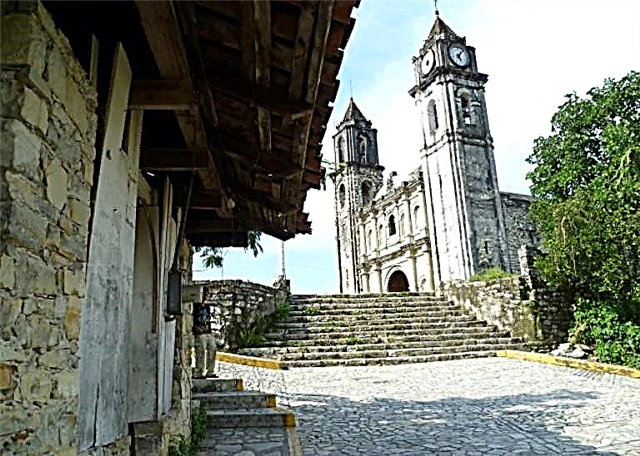
It was an indigenous encomienda of the 16th century that in 1823 received its second name in honor of Miguel Hidalgo, now being a Veracruz Magical Town of just over 3,000 inhabitants. Its architecture is a mixture of the viceregal style with the Mexican autochthonous contributions, particularly the church of the patron saint of the town, San Miguel Arcángel. In the patron saint festivities, celebrated between the end of September and the beginning of October, Christian elements are mixed with pre-Hispanic ones, among these, the dances of the Sanmigueles and the Quetzales.
Other attractions of the town are its bodies of water, such as the Cascada de Guerrero. Intense lovers of nature also have the El Jabalí Protected Area.
If you want to read the complete guide to Zozocolco click here.
We hope you enjoyed this walk through the Magic Towns of Mexico, hoping that you can leave us a brief note about your impressions.
Mexico Resources
The 45 tourist places in Mexico that you have to visit
The 15 best beaches in Oaxaca
The 10 best beaches in Veracruz
